Ever felt overwhelmed by all the apps and content creation tools out there? 😅 As a social media content creator, you’re definitely not alone. Marketers and brands know there’s a lot more to creating great content for social media, and the tools you use can make all the difference. In fact, a recent LinkedIn poll found 86% of marketers use ChatGPT as their go-to AI tool for content marketing – a testament to how much creators rely on digital helpers nowadays. Whether you’re focused on content creation for social media specifically or creating content across digital platforms, having the right toolkit is a game-changer.
Good news: We’ve compiled a social media tools list of 30+ must-have software and apps that will turbocharge your creative process. These include digital content creation tools for every medium – images, videos, text, planning, and more – including plenty of free content creation tools for social media creators on a budget. (Yes, you can create amazing content for free or with affordable apps!) By the end of this list, you’ll know exactly which tools for content creation can save you time, spark your creativity, and help you make scroll-stopping posts.
Visual Content Creation Tools (Images & Graphics)
They say “a picture is worth a thousand words,” and on social media it might be worth a thousand likes! Visuals are essential for engagement – posts with images on social platforms get 150% more engagement on average compared to text-only posts. Having the right graphic design and photo editing tools will help your content stand out. Here are some of the best tools for content creators to easily create stunning images and graphics.
Canva
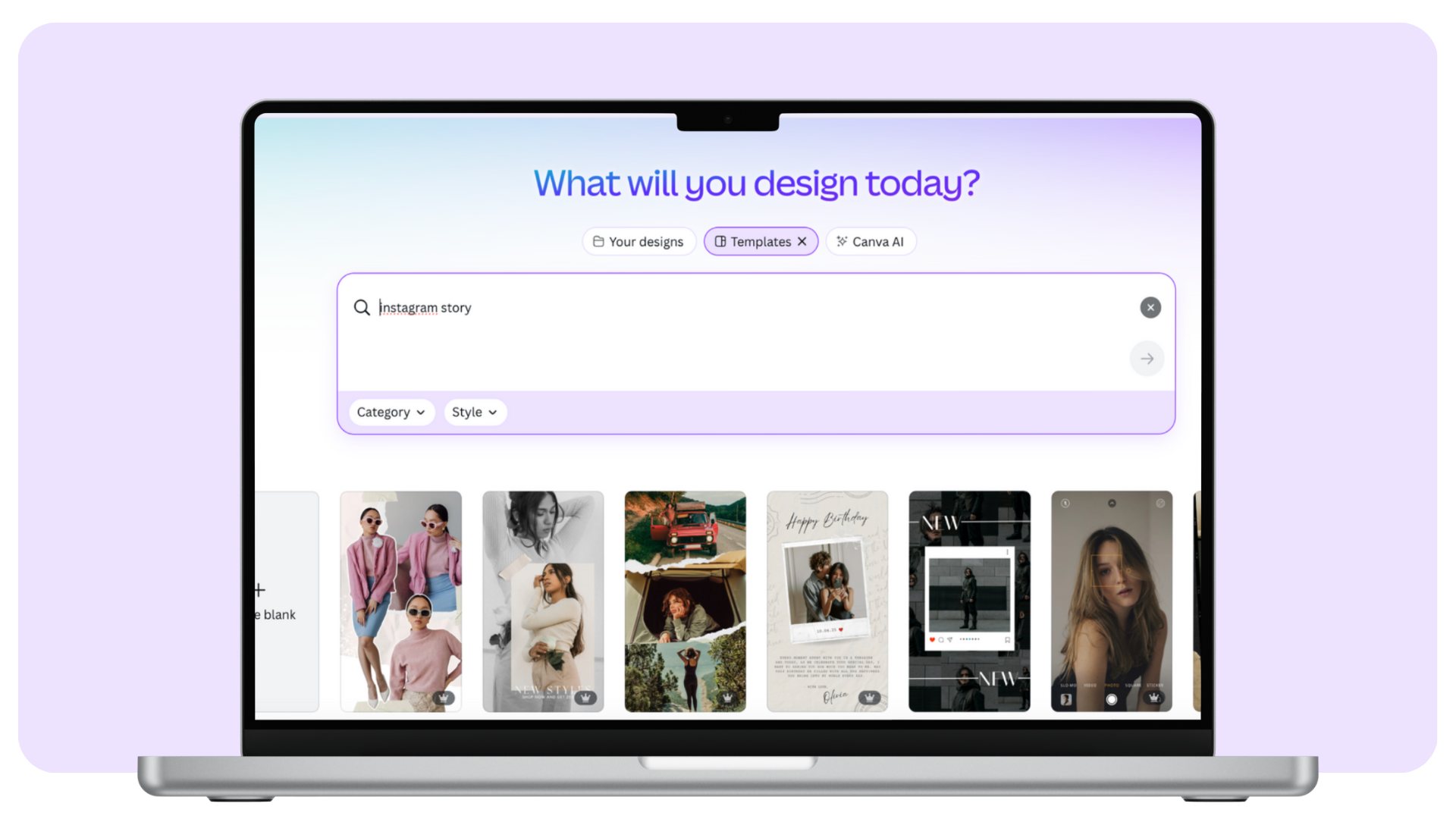
Arguably one of the best content creation tools for visuals. Canva is a user-friendly online design platform loaded with templates for Instagram posts, stories, infographics, YouTube thumbnails – you name it. It’s drag-and-drop simple, so even if you’re not a professional designer, you can create polished graphics in minutes. (Bonus: Canva is free with optional paid upgrades, making it one of the top free content creation tools for beginners.)
Adobe Express (formerly Adobe Spark)
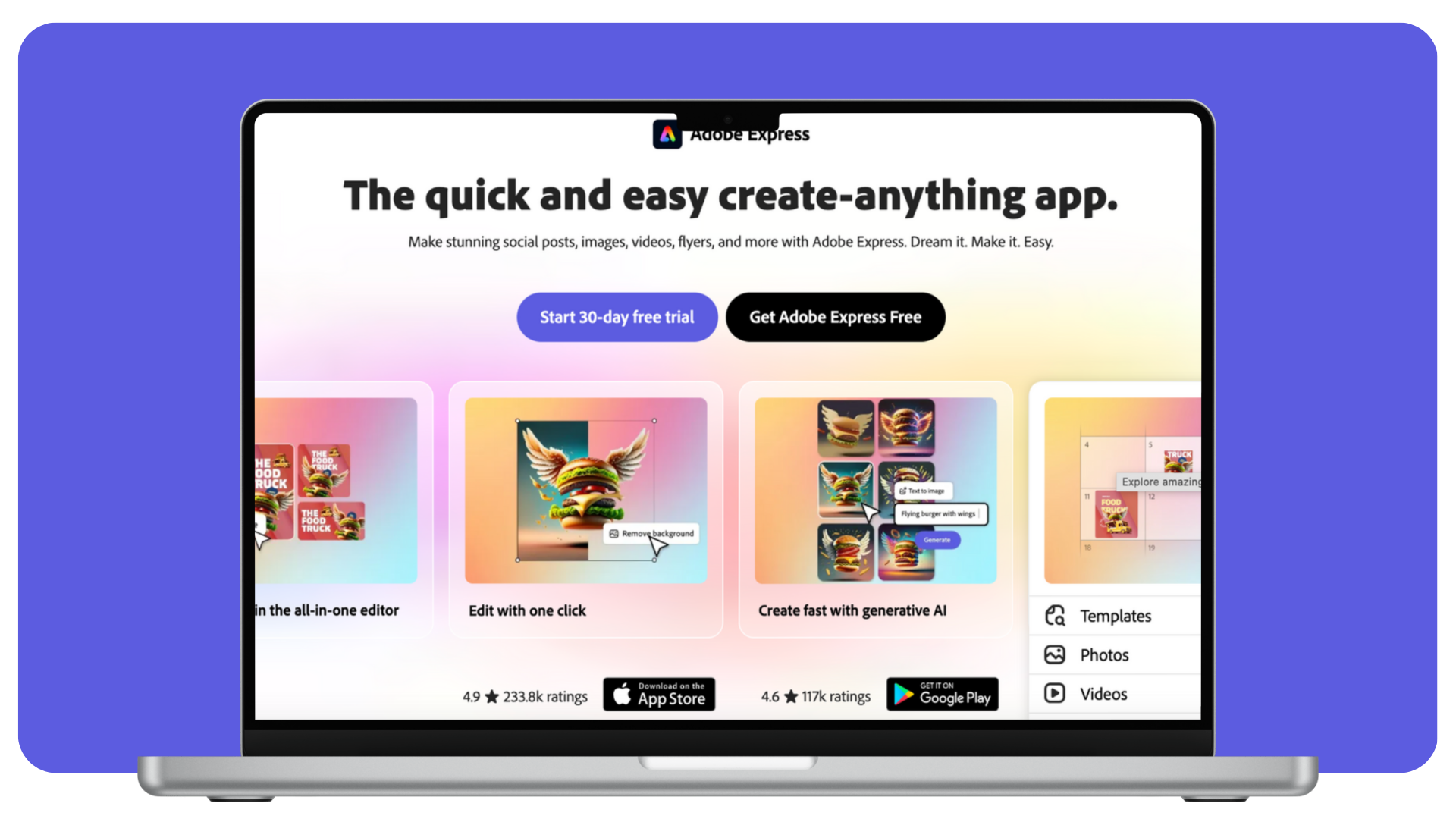
A content creation platform from Adobe that lets you make social graphics, short videos, and web pages quickly. Adobe Express comes with beautiful templates and is great for when you need to create digital content on the fly. It’s web-based and has a free plan, so it’s accessible to anyone. If you need more heavy-duty editing, you can always step up to Adobe Photoshop or Illustrator – the classics for image editing and vector graphics – but those have steeper learning curves. Adobe Express strikes a nice balance for quick social media content creation.
VistaCreate (Crello)
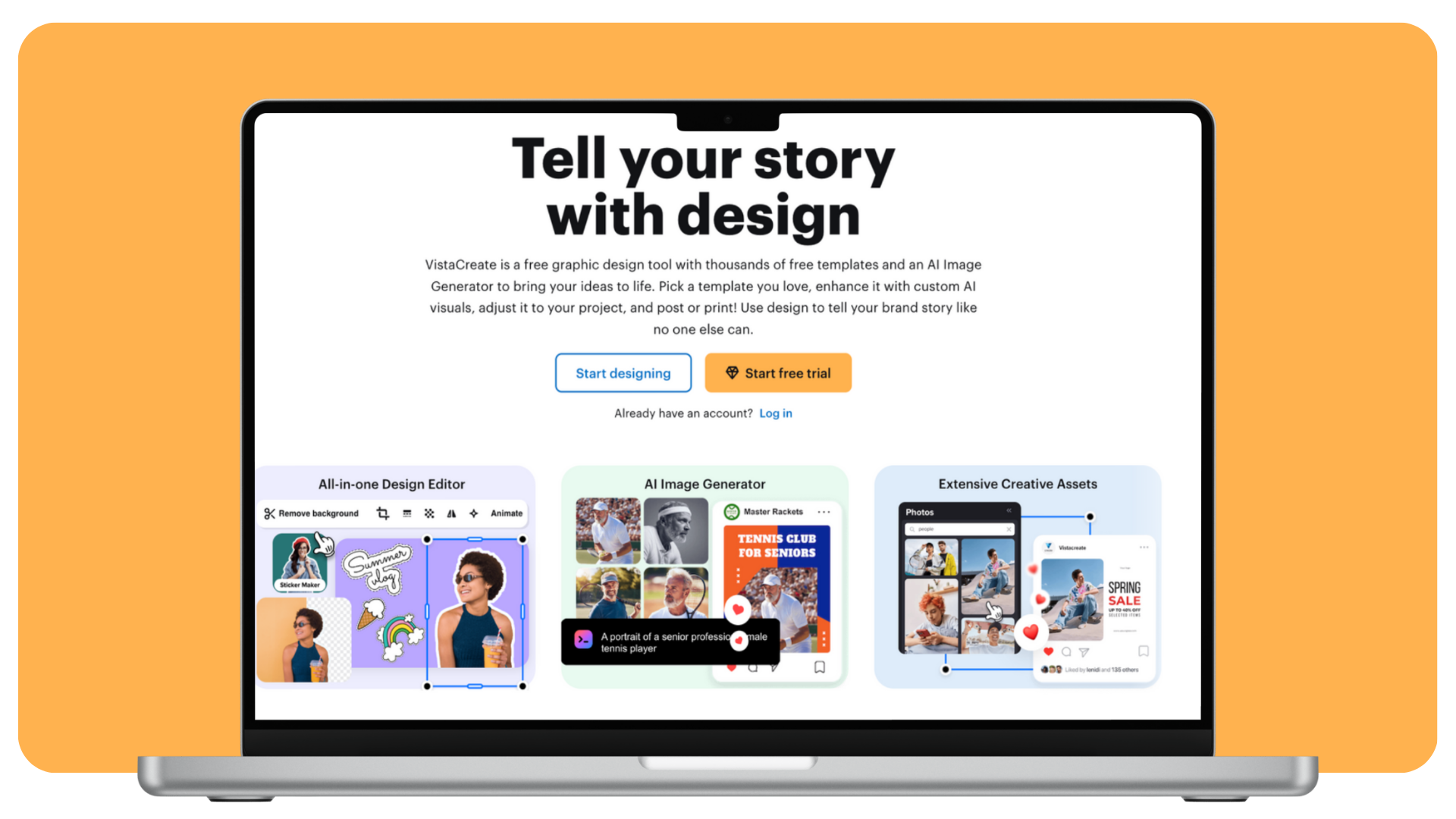
A Canva alternative with its own library of templates and stock images. VistaCreate is tailored for social media content creators, offering templates for ads, stories, covers, and more. It’s an online content creation tool with a free tier, ideal for making eye-catching visuals without starting from scratch.
Pixlr
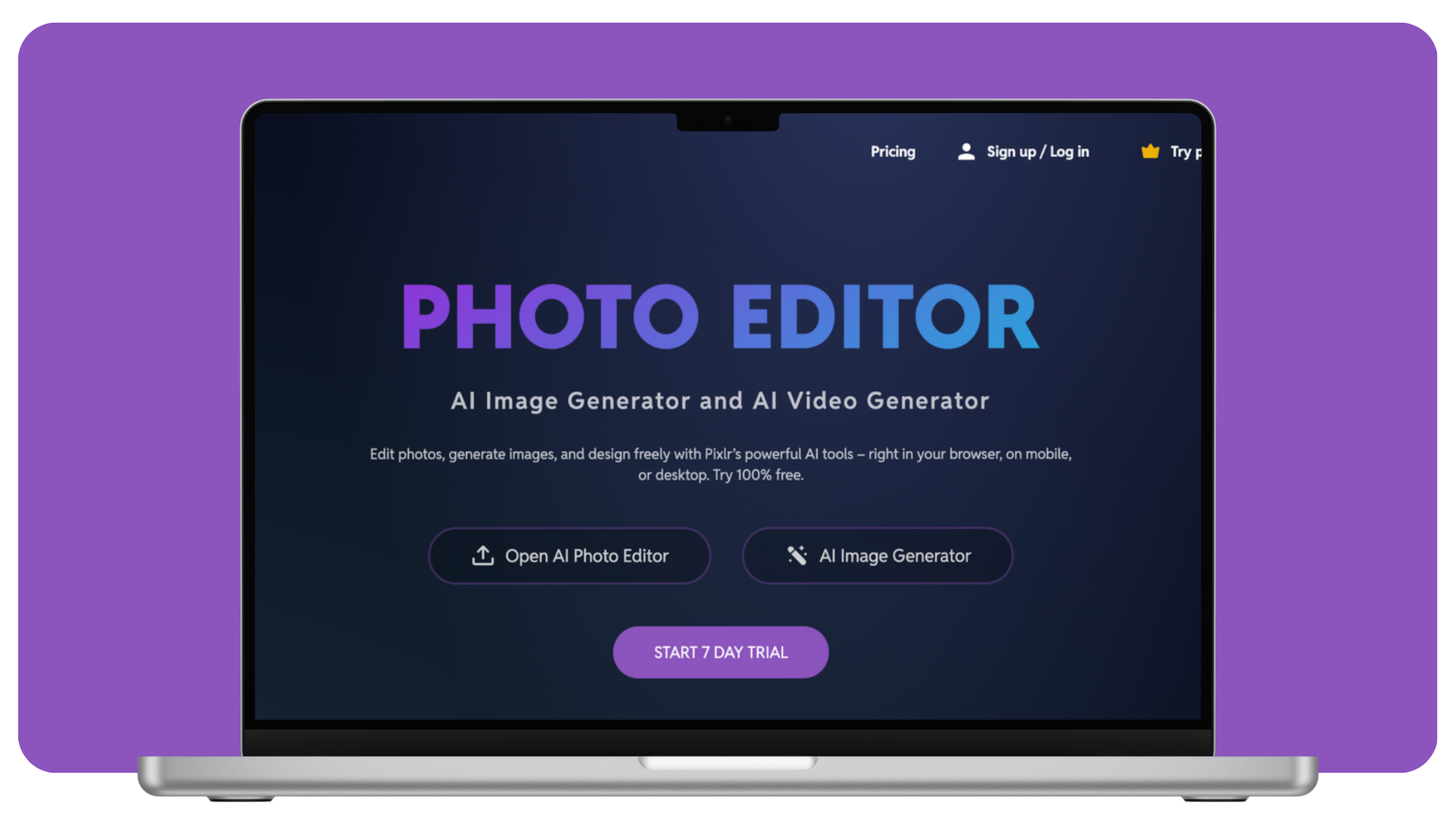
An online photo editor that’s like having a lightweight Photoshop in your browser. Pixlr offers advanced editing features (layers, effects, retouching tools) yet remains easy to use. It’s great for quick edits or creating memes and has both a free version (ad-supported) and paid version. PicMonkey is another similar tool – also user-friendly for editing photos, adding text overlays, and making collages. These kinds of content creation software come in handy when you need to fine-tune images or create custom graphics.
Unsplash (Stock Photos)
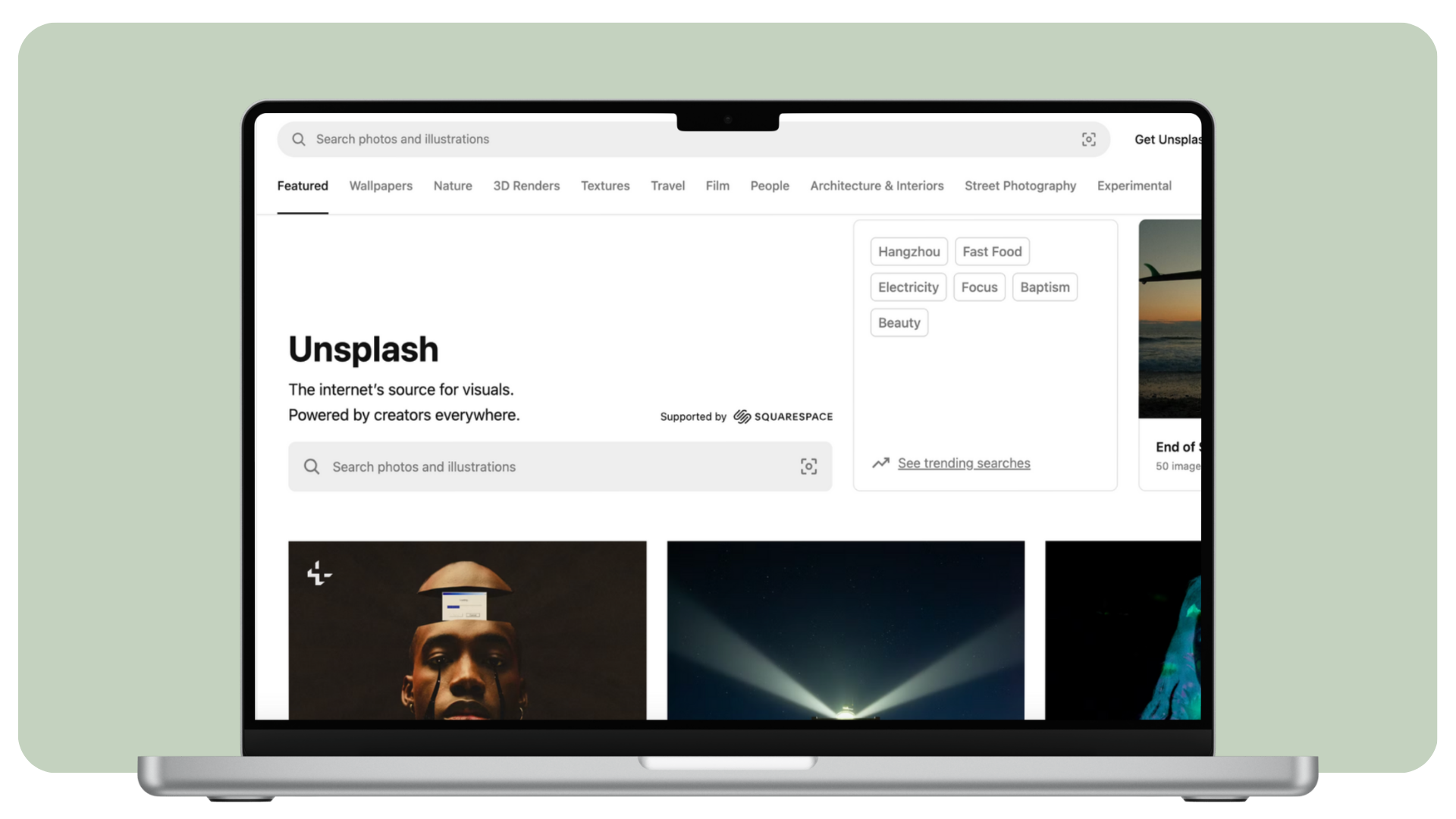
Ever need a gorgeous free photo as a background or to complement your post? Unsplash has you covered with a huge library of high-resolution images provided by photographers, free to use. While not a creation tool per se, I’m including it because every content creator should know about free stock photo sites. Along with Unsplash, check out Pixabay and Pexels for more free images. Incorporating striking visuals from these platforms can dramatically improve your content’s appeal.
DALL·E & Midjourney (AI Image Generators)
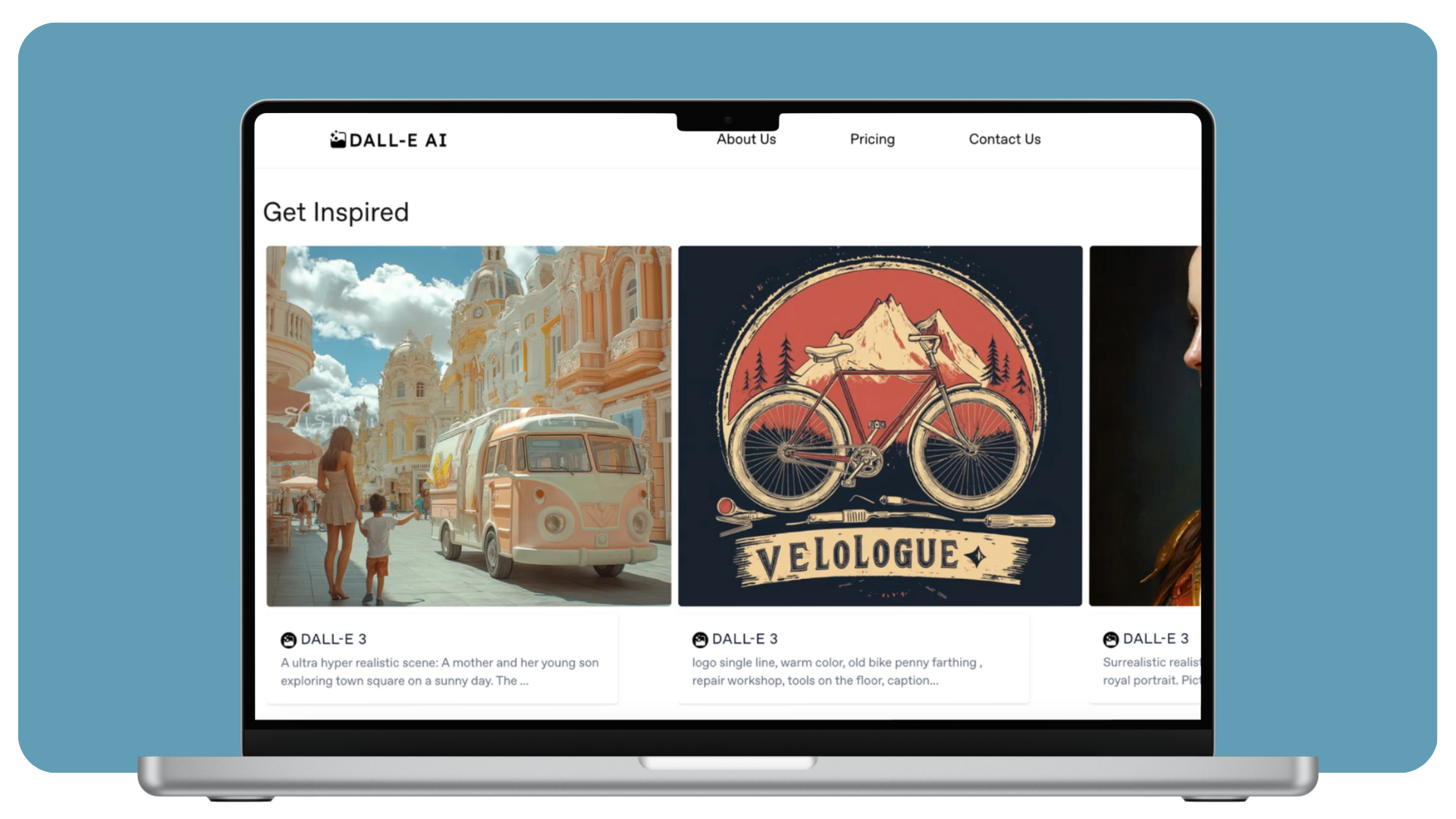
Feeling extra creative or need a very specific image that you can’t find elsewhere? AI image generation tools like DALL·E 2 and Midjourney can create unique artwork from text prompts. For example, you can ask for “a futuristic cityscape in watercolor style” and bam! – an original image appears. Content creators are increasingly experimenting with these AI tools for content creators to generate illustrations or concept images. Just use them ethically and be upfront if you’re posting AI-generated art. It’s a new frontier in visual content creation, and amazingly, many of these AI tools have free trial options.
Why visuals matter: Not only do attractive images stop users mid-scroll, but they also convey your brand’s story at a glance. With these digital media tools in your arsenal, you can design everything from inspirational quote graphics to product photos that pop. Remember, consistency is key – using the same fonts, colors, and styles (which tools like Canva make easy with brand kits) will make your content instantly recognizable. The goal is to create a visual identity that your audience loves.
Modern image editing tools provide intuitive interfaces to transform and enhance photos. For example, Pixlr’s robust online editor (seen above) lets creators easily apply effects, filters, and overlays to craft stunning visuals without expensive software.
Video Content Creation Tools
If pictures are worth a thousand words, then videos are worth a million! 🎥 Videos are dominating social media – from snappy TikToks and Instagram Reels to longer YouTube vlogs. In fact, most content creators produce multiple content types (58% create 2–4 types of content), and video is often a big part of that mix. Don’t worry, you don’t need a Hollywood film crew to make great videos; these social media content tools will do the trick:
CapCut

A superstar app for short-form videos (and it’s free!). CapCut, developed by the makers of TikTok, is perfect for editing TikToks or Reels on your phone. It offers templates, effects, filters, and an easy timeline for cutting clips. Many TikTokers swear by CapCut for its simplicity and powerful features (like auto-captions and background music library). If you want to create engaging social videos quickly, CapCut is a must-have app for content creation.
Adobe Premiere Rush
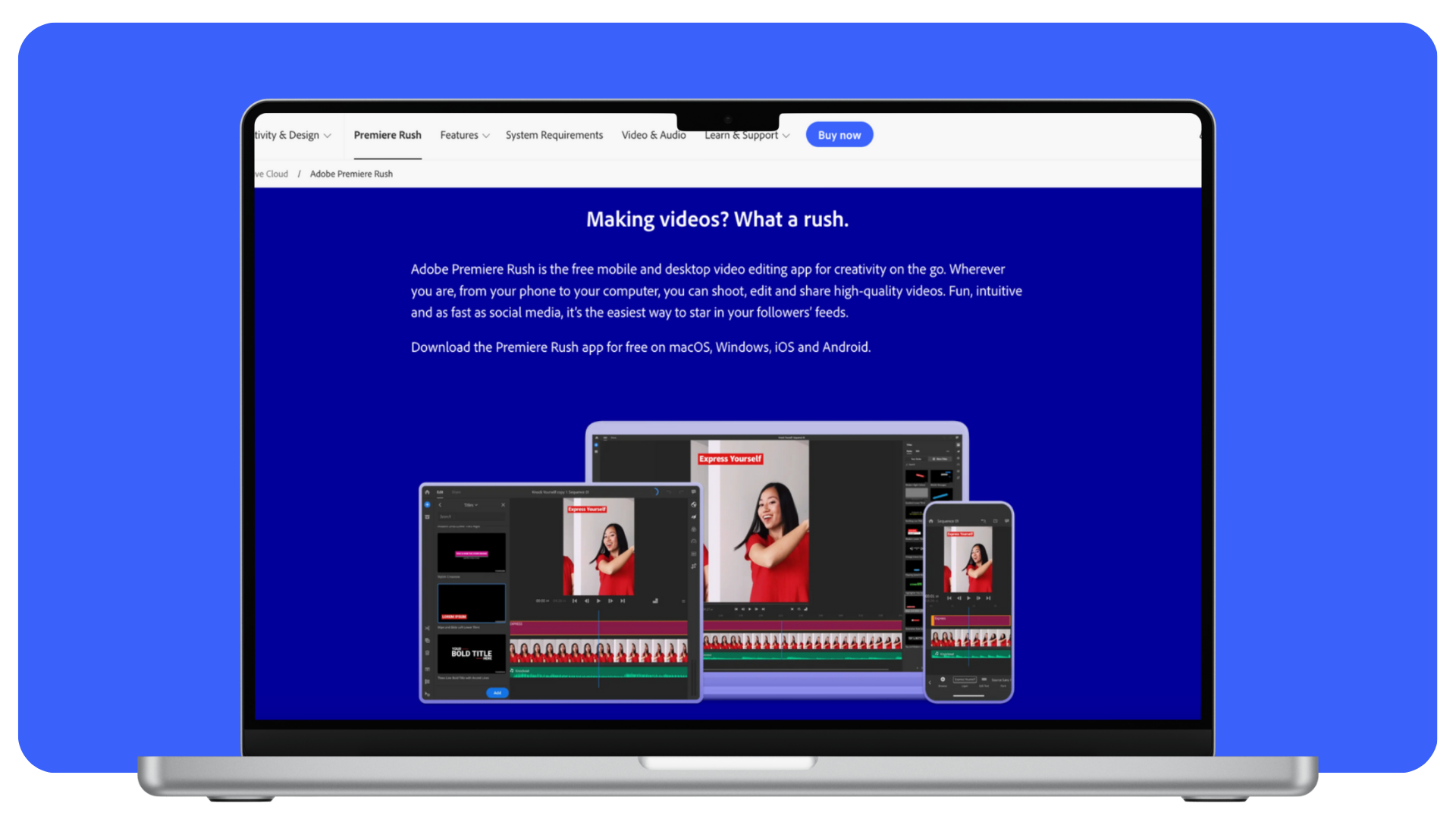
From Adobe’s suite, Premiere Rush is a beginner-friendly video editor available on mobile and desktop. It’s designed for content creators who want to edit on the go. You can trim clips, add titles, adjust color, and sync to music. It’s more robust than most mobile editors but far simpler than Adobe Premiere Pro (the heavyweight pro software). Rush is great for YouTube intros, how-tos, or any social video that needs a bit of polish without the overwhelm of pro software.
Animoto / Biteable
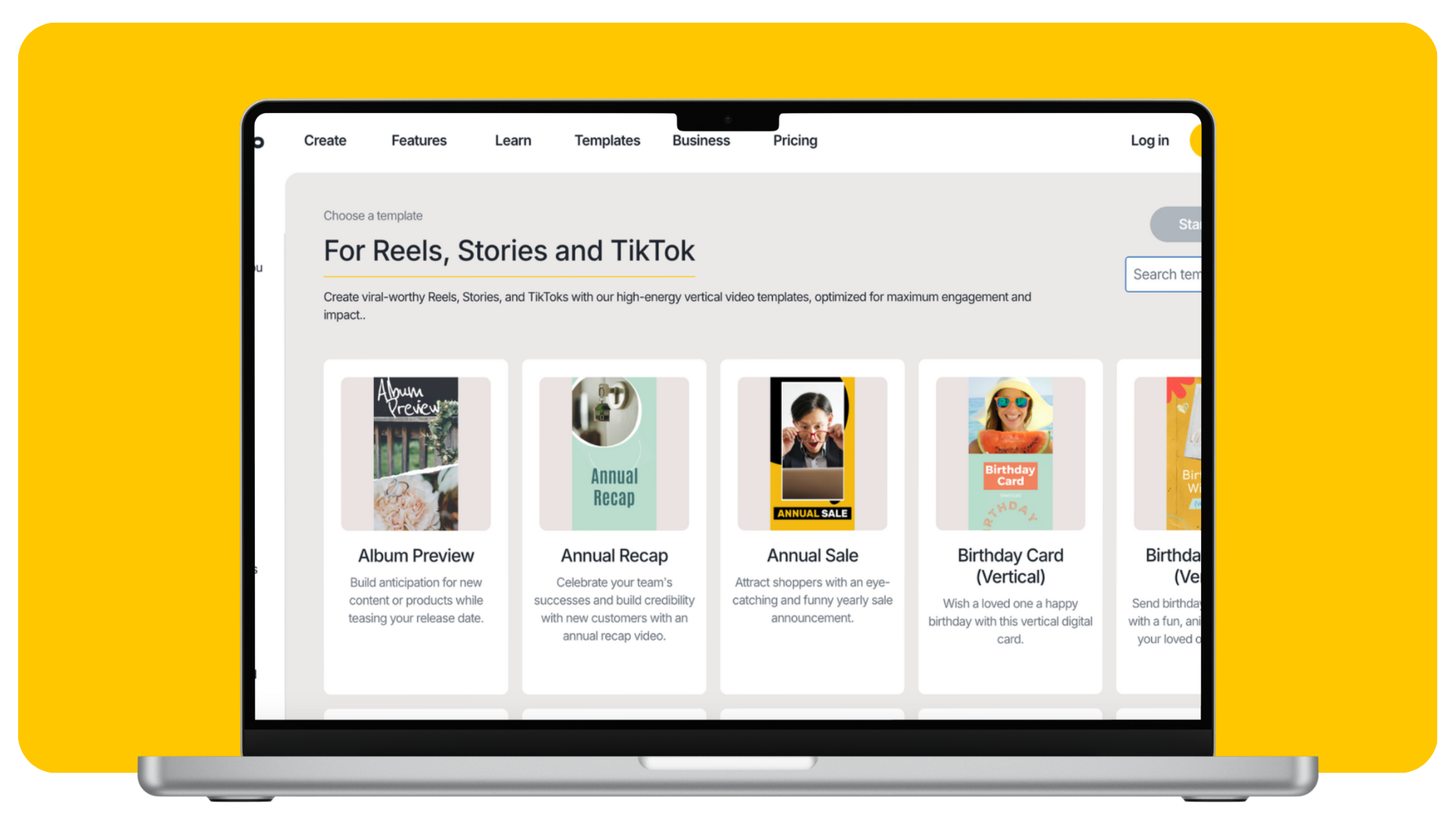
These are online platforms that let you create videos from pre-made templates. Animoto, for example, allows you to drop in your photos or video clips, add text, choose a music track, and it handles the styling and transitions for you. Biteable is similar – think of them as video slideshow makers. They’re awesome for making promo videos, testimonials, or quick informative clips, even if you have zero editing experience. Many have free plans or trials, so they double as content creation tools free of cost to get started.
FlexClip
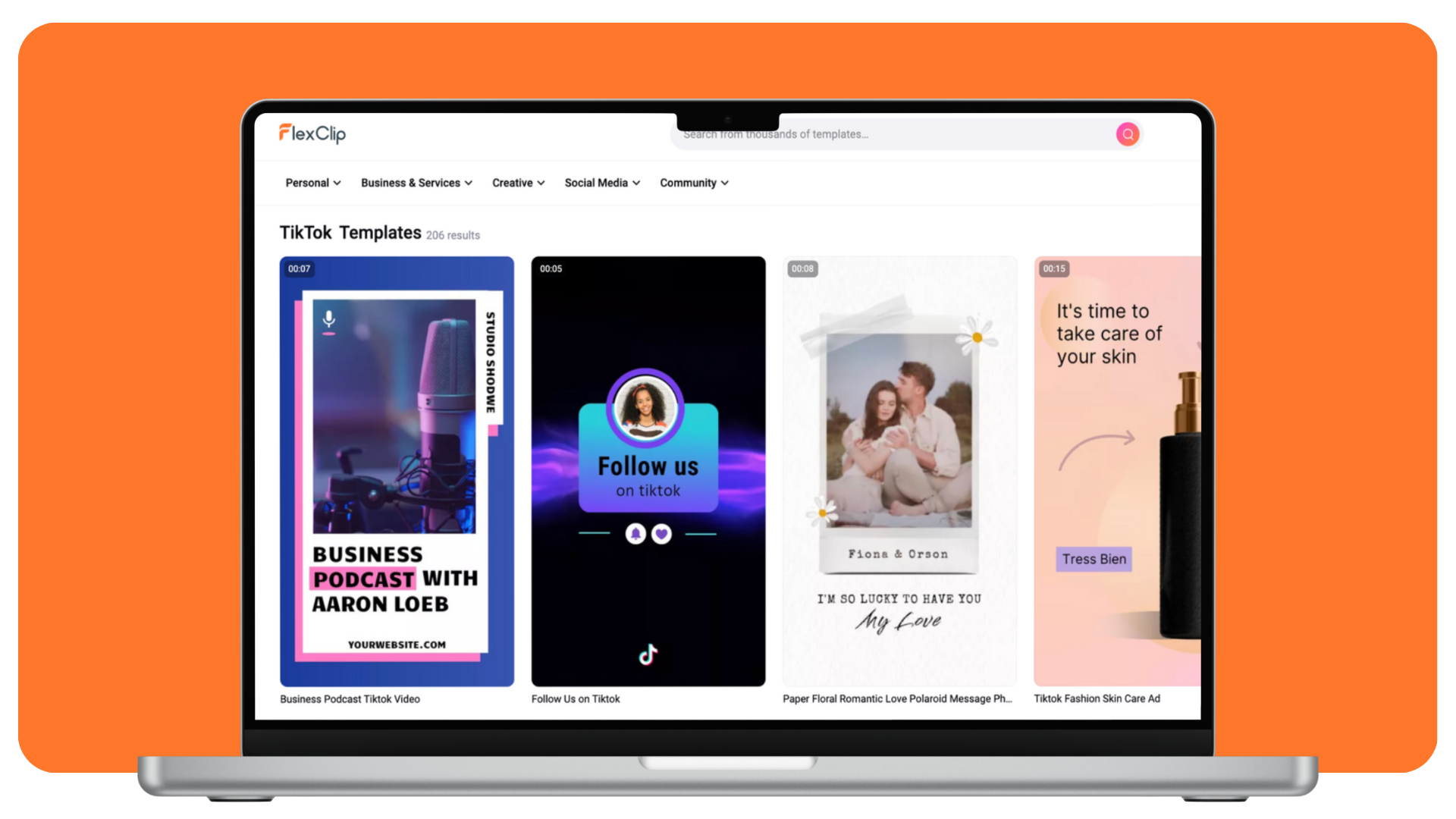
Another online content creation software for video, which the Digital Marketing Institute specifically noted as a handy tool. FlexClip provides templates for marketing videos, social media stories, and more. It’s particularly useful for business owners or creators who want to whip up a slick video ad or announcement without hiring an editor. Just pick a template, tweak the text and media, and export. Easy!
InShot
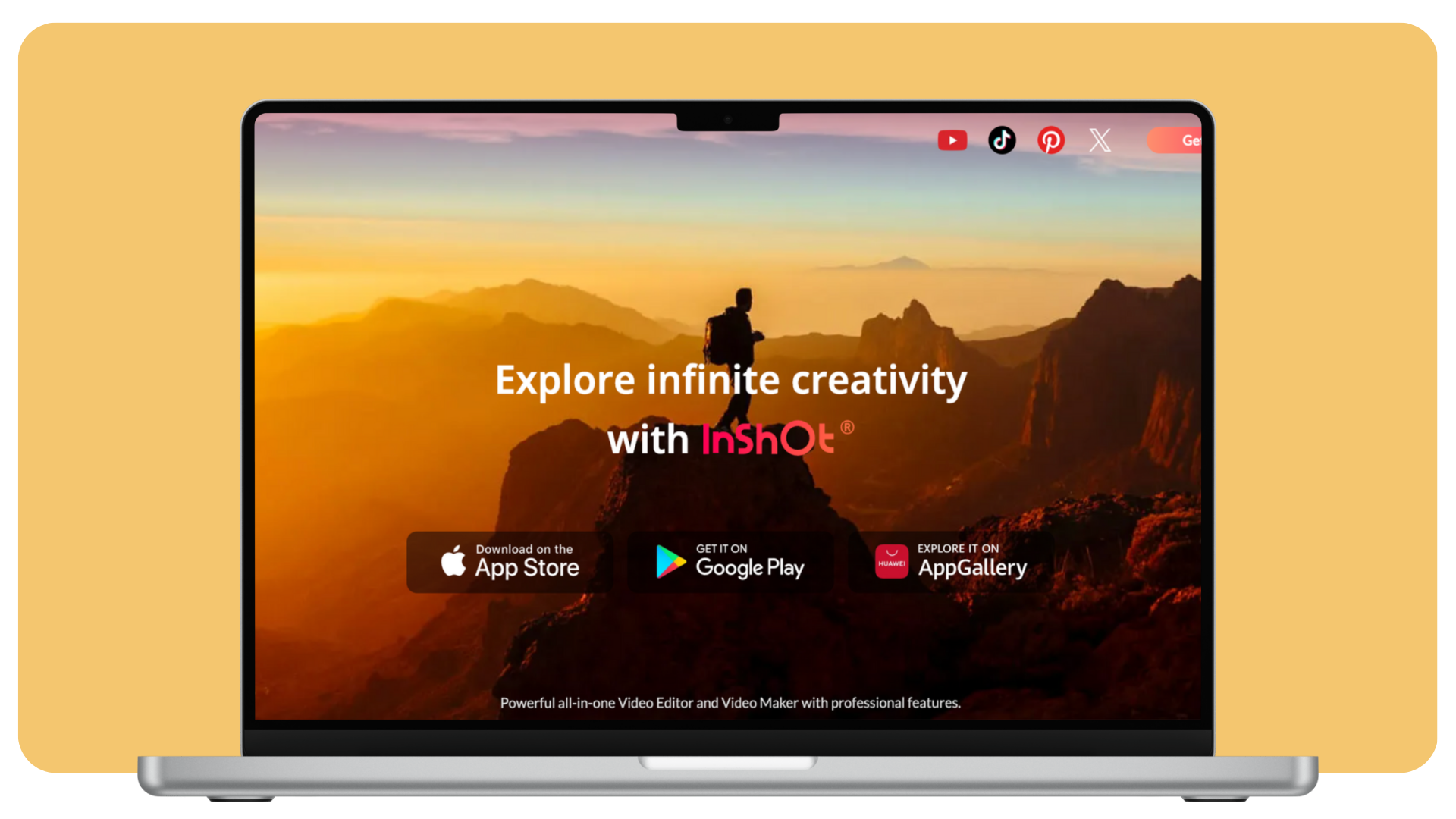
A popular mobile app for video editing (on both iOS and Android). InShot is great for editing videos for Instagram or Snapchat. You can merge videos, add music, stickers, speed adjustments, and pretty much everything you need to make a fun, engaging clip. The interface is simple – perfect if you’re editing vlog snippets or daily stories. While the app is free, a small watermark is added (which can be removed via a modestly priced upgrade).
Advanced Editors (Premiere Pro, Final Cut Pro, DaVinci Resolve)
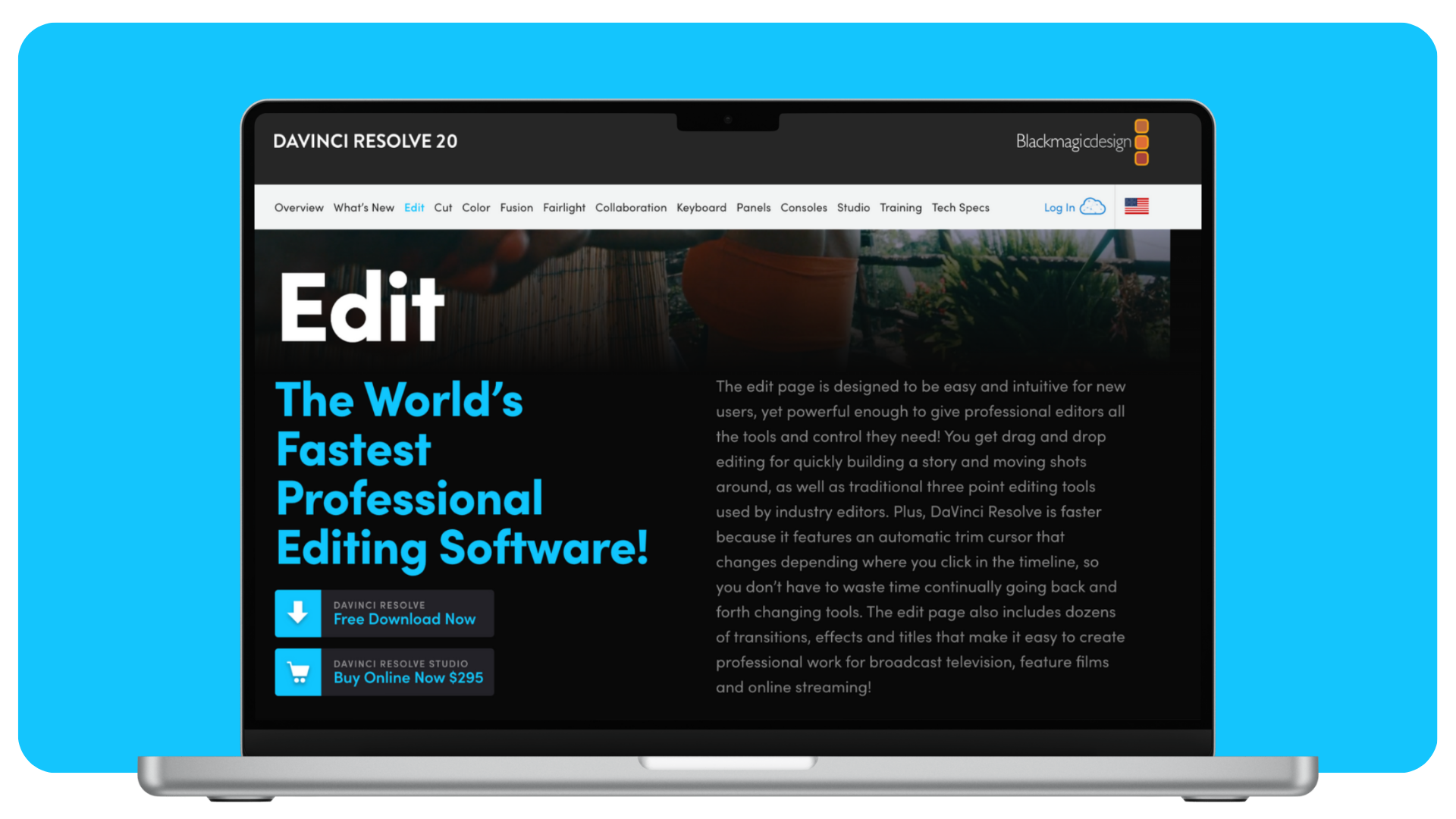
If you’re ready to go pro-level, there are the big guns. Adobe Premiere Pro (for PC/Mac) and Final Cut Pro (for Mac) are industry-standard video editing programs. They’re powerful but have a steep learning curve. DaVinci Resolve is another professional-grade editor which is actually free to use (it started as a color grading tool and evolved into a full editor). These might be overkill for everyday social media posts, but if you’re venturing into YouTube cinematography or high-production content, it’s good to know what the pros use. Many content creators eventually graduate to these as their skills and ambitions grow.
Pro tip: Start simple and level up as needed. For most creators, quick content creation apps like CapCut or InShot handle 90% of social video needs. The key is to focus on storytelling – even a phone-edited video can go viral if it’s creative and speaks to your audience. Use text overlays, captions (many viewers watch on mute), and trending music to maximize engagement. And don’t forget, short-form videos (around 15-60 seconds) are currently the sweet spot for many platforms – short and sweet often wins the day!
Icons of popular video editing software (like Adobe’s Premiere and others shown above) underscore the variety of video tools available. You don’t need studio-grade software for social media videos – many content creators achieve amazing results with easy, accessible video editors. The best content creation tool for video is one that fits your style and workflow.
Content Ideation & Research Tools
Stuck in a creative rut, wondering what to post? We’ve all been there. Coming up with fresh, engaging content ideas consistently is one of the hardest parts of being a creator. That’s where content ideation tools come in handy. Think of these as brainstorming buddies or research assistants that help you uncover topics and trends your audience will love. Every content creator should have a go-to content ideas tool or two in their toolkit:
AnswerThePublic
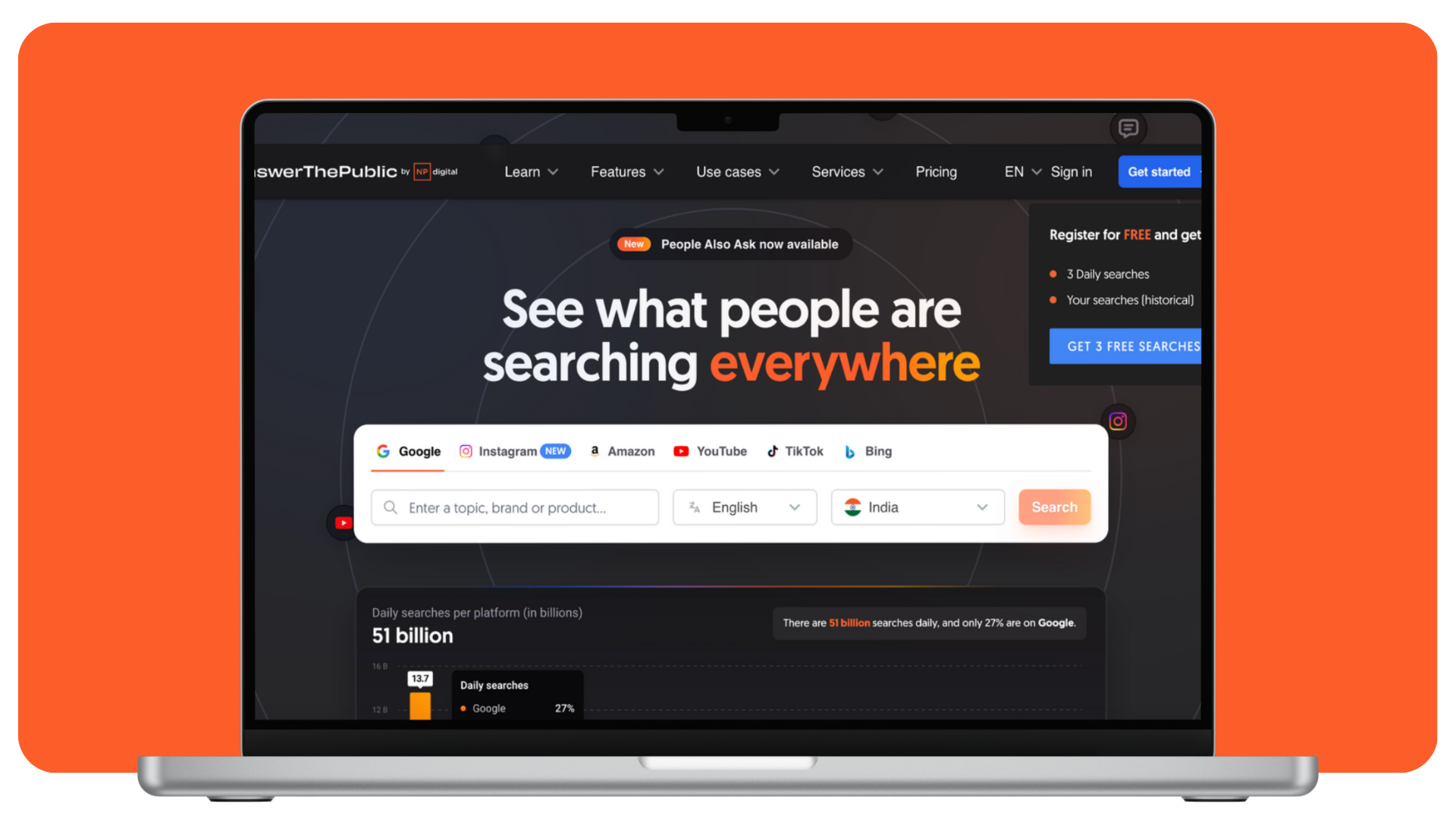
An incredibly cool tool for brainstorming. Enter any keyword (say, “social media content”) and AnswerThePublic will generate a spider-web of questions people are asking about it (like “How to create social media content?”, “What social media content works best?”, etc.). It’s literally tapping into common search queries. This can spark ideas for posts, videos, or even entire series addressing those questions. It’s great for understanding your audience’s curiosities.
BuzzSumo
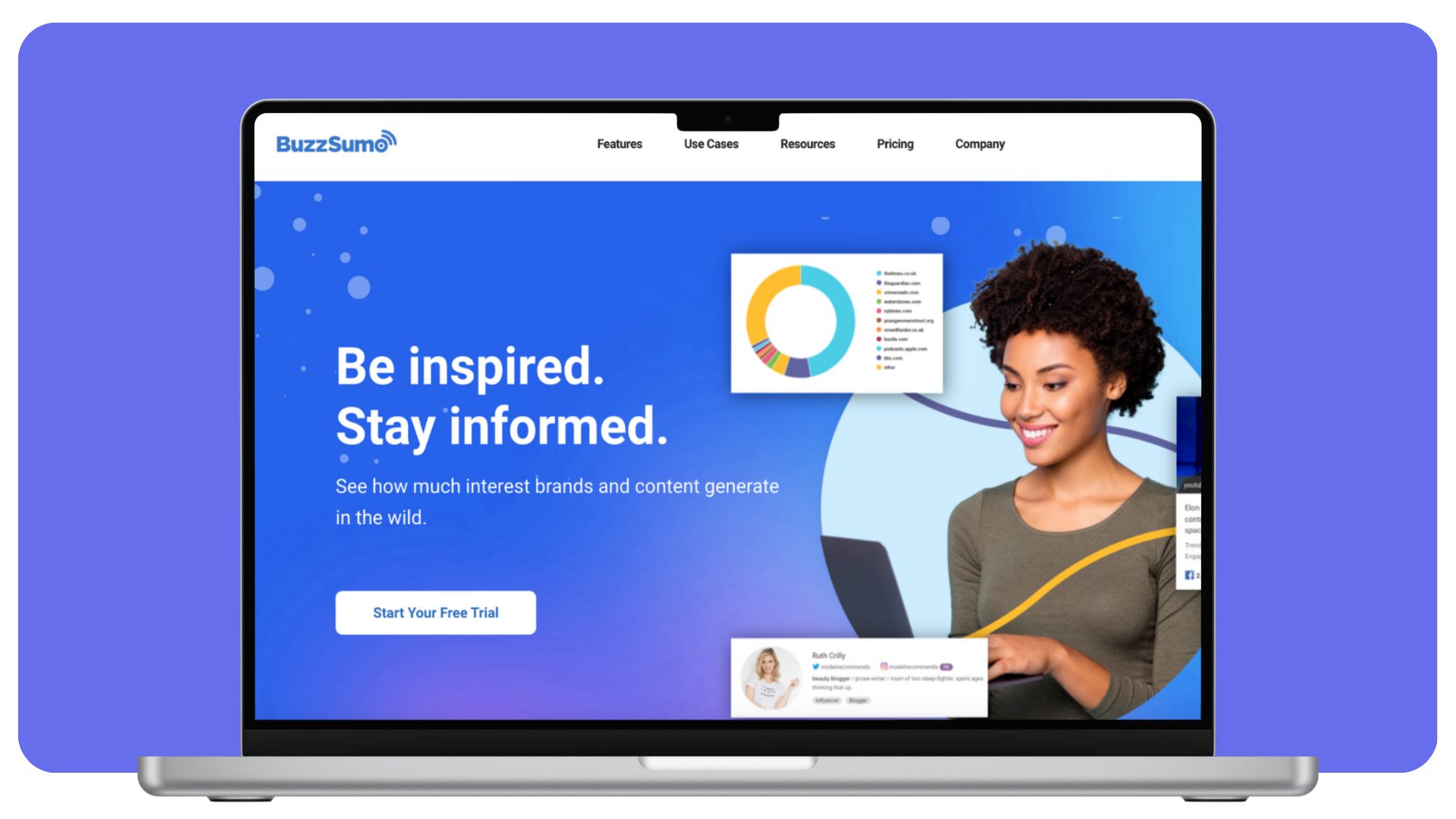
This tool lets you see what content is trending or performing well on social media for a given topic. For example, search a keyword or a competitor’s profile, and BuzzSumo will show the most shared or engaged content related to it. This can inform your content strategy – if you see listicles or how-to posts blowing up, you might decide to produce something similar with your unique angle. It’s a bit more of a content marketing tool in general, but very useful for creators who want data-backed ideas.
Google Trends
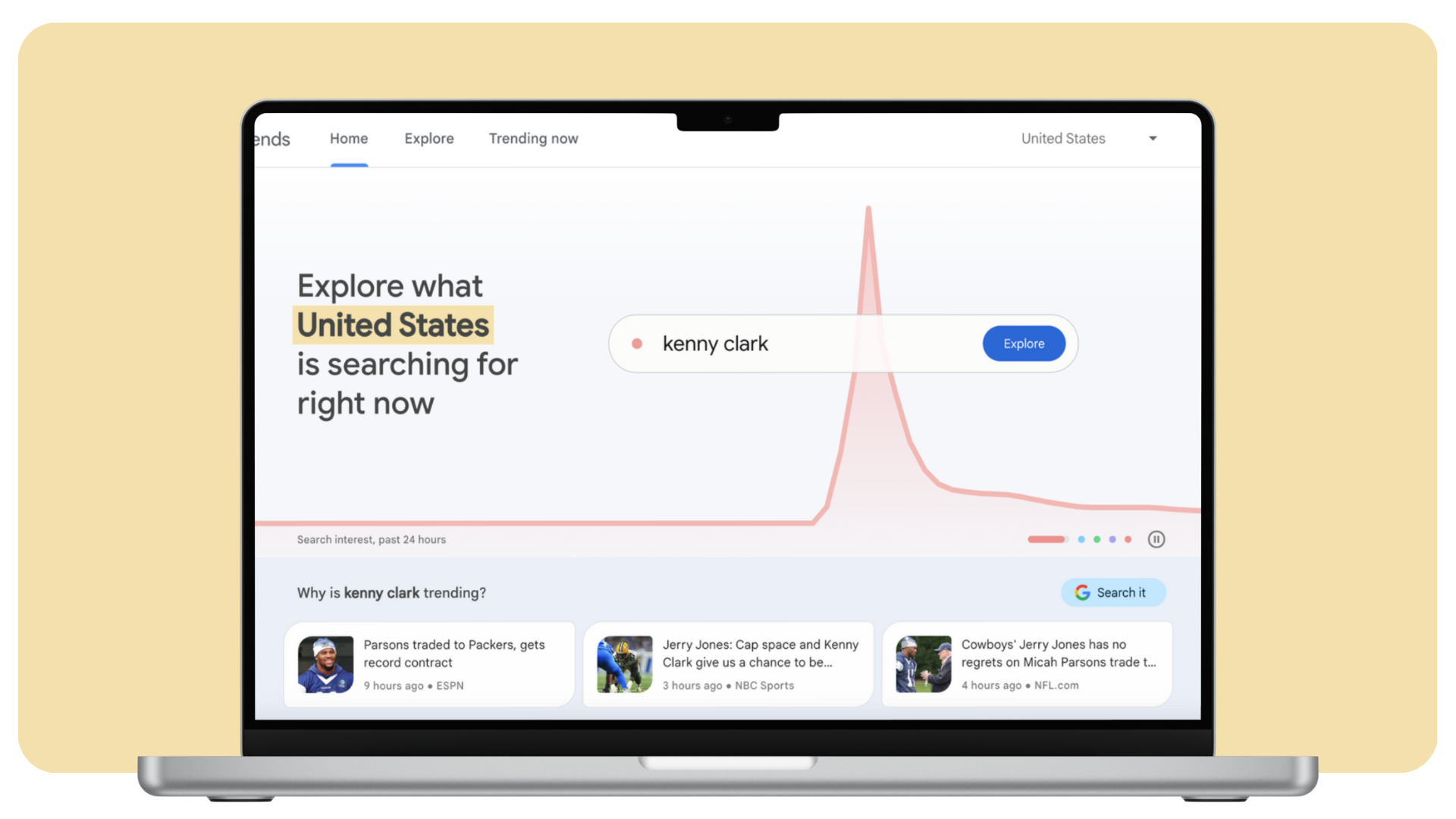
A free tool from Google that shows you the search interest for topics over time. You can compare terms, see what’s spiking, and even filter by region. If you want to ride the wave of a trend, Google Trends can validate if something is hot or not. For instance, it might show that “TikTok challenges 2025” are on the rise – which is your cue to maybe do a post about a trending challenge (safely and creatively, of course!).
Reddit & Quora
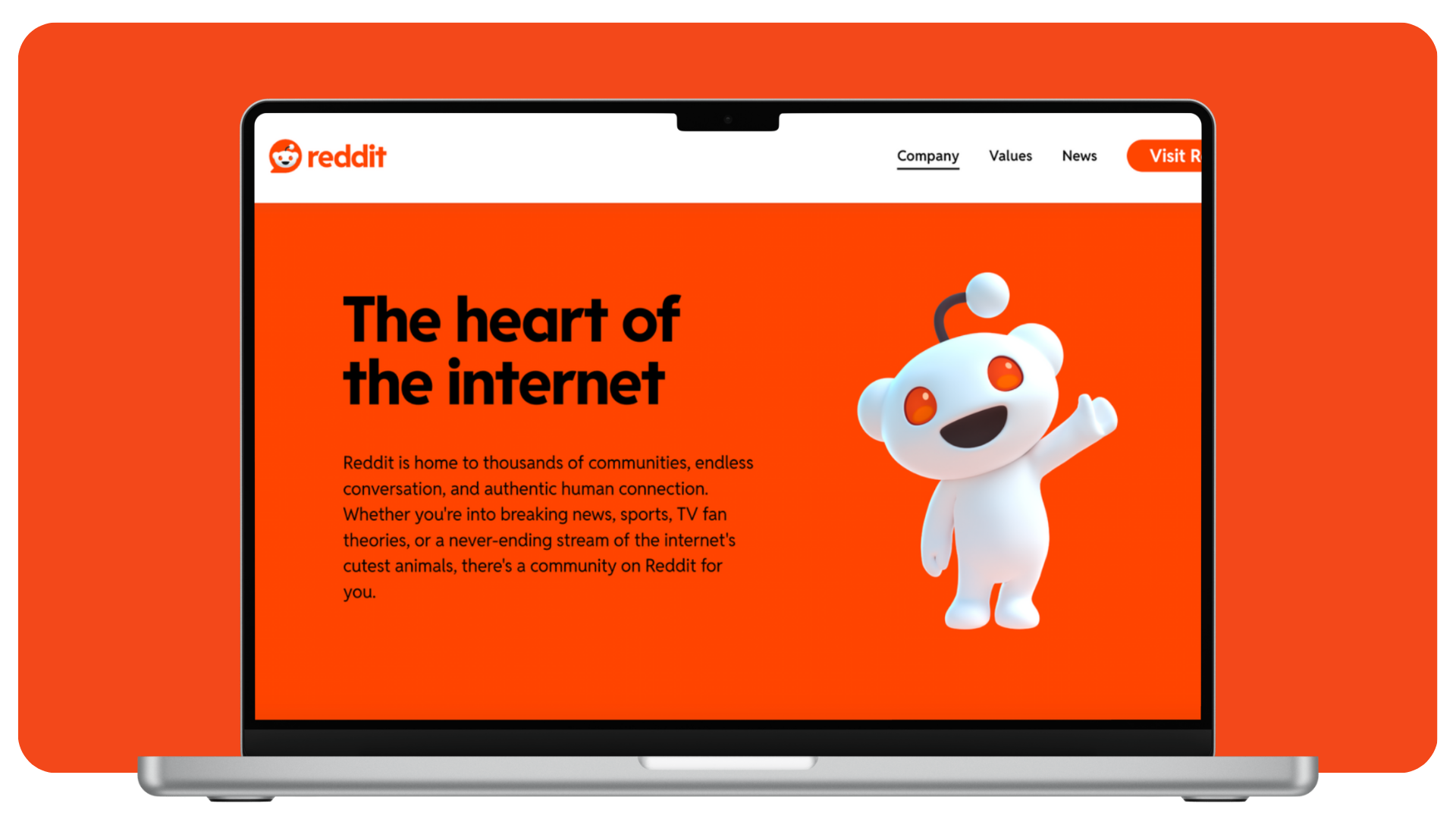
Not traditional “tools,” but these platforms are goldmines for content ideas. Browse subreddits related to your niche or search Quora for questions people ask about your topic. The discussions there can reveal pain points or interests of your potential audience. For example, if you’re a fitness content creator, seeing many Reddit posts on “how to stay motivated to work out” could inspire you to make content addressing that need. Essentially, social listening on forums helps identify what real people care about.
HubSpot Blog Ideas Generator / Portent’s Idea Generator
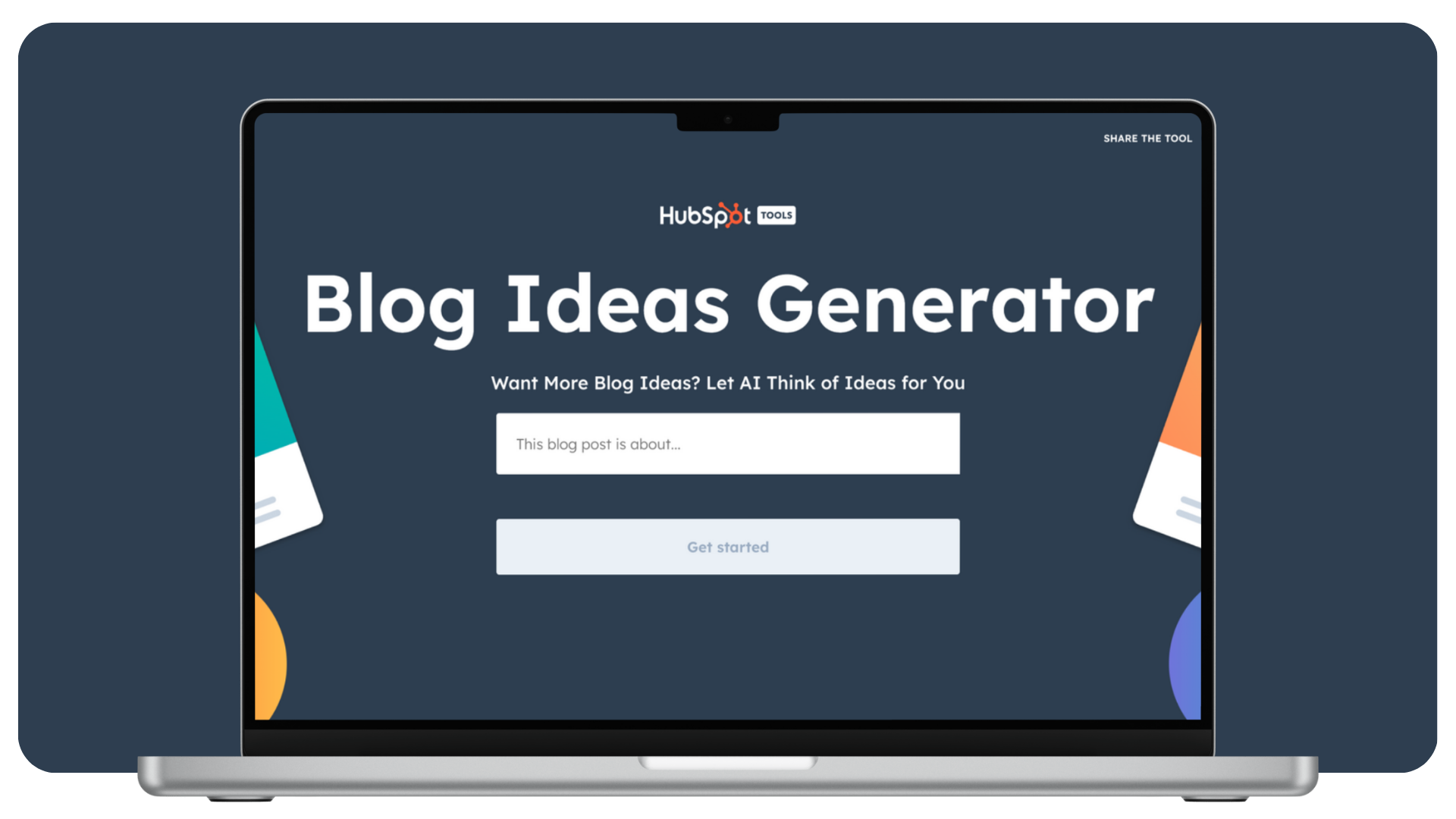
Fun little tools where you input a noun or topic, and they spit out catchy blog post titles or ideas. They’re a bit gimmicky, but sometimes the prompts get your wheels turning. Even if the suggestions are silly, they might lead you to a more refined idea. Don’t rely on them heavily, but they’re good for a quick jolt of inspiration.
ChatGPT (for Brainstorming)
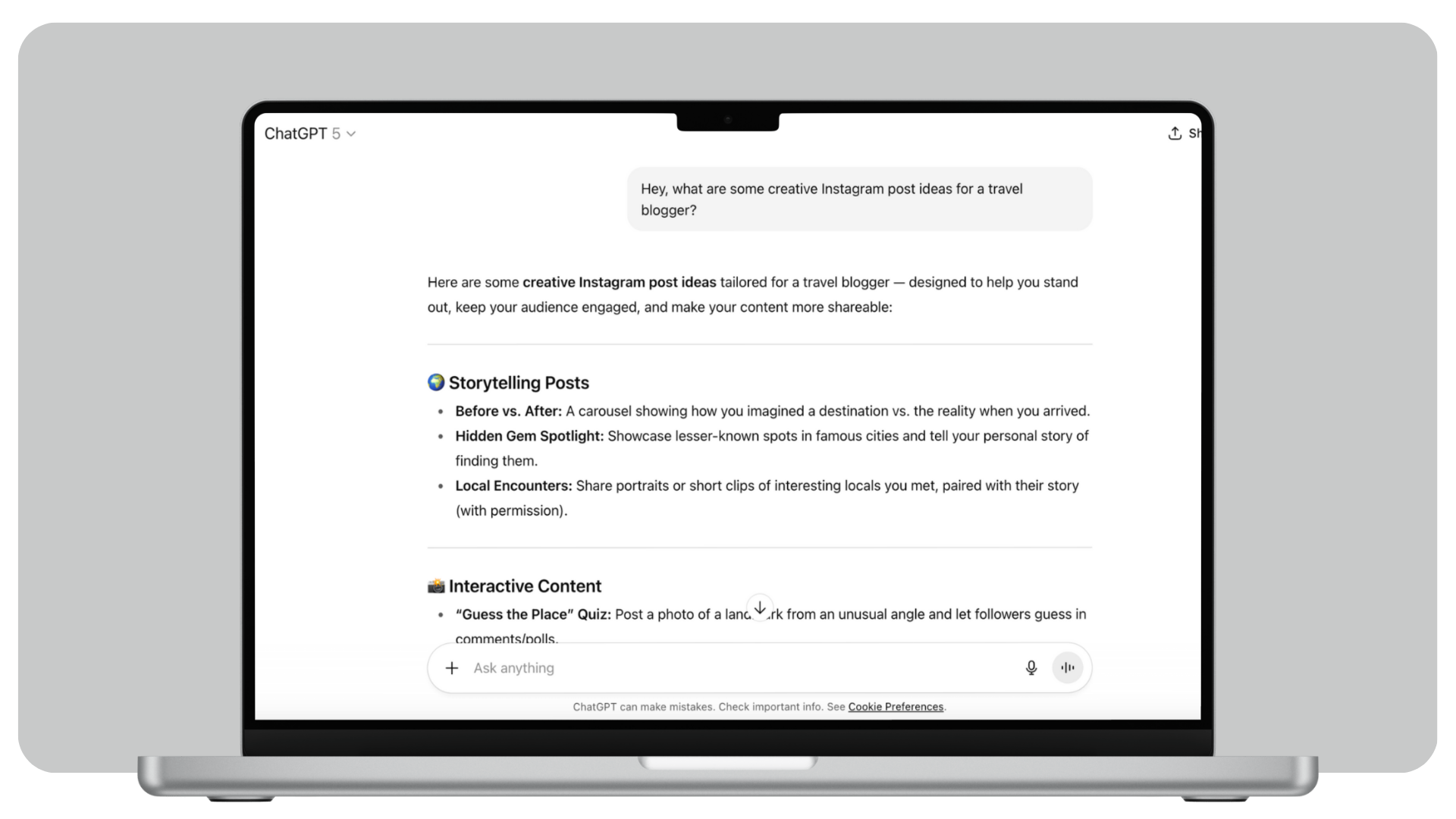
A no-brainer! AI chatbot can be your ideation buddy too! You can literally ask ChatGPT, “Hey, what are some creative Instagram post ideas for a travel blogger?” and it will happily list suggestions. Or use it to riff on a content angle, outline a video script, etc. While you shouldn’t have AI write all your content, it’s excellent for overcoming writer’s block or generating a few quick concepts to build on. And as mentioned earlier, a lot of creators and marketers have embraced AI – 94.5% of content creators use AI tools in some form[4], which shows how mainstream AI assistance has become in content development.
Bottom line: With these tools, you’ll never run out of things to create. Pay attention to what questions your followers ask, what’s trending in your niche, and what type of content gets you excited – then use the tools above to refine those sparks into solid ideas. Content creation in social media is part art and part science; ideation tools cover the science part by giving you data and structure, so your artistic side can focus on the storytelling and creativity.
Writing & Editing Tools (Text Content & Copy)
Visuals hook the audience, videos captivate them, but words ultimately communicate your message. Captions, tweets, blog posts, video scripts – a content creator’s job is as much about writing as it is about visuals. Good writing can nurture an engaged community and drive action (like clicking a link or buying a product). Here are some content creator tools to sharpen your writing and editing process:
Grammarly
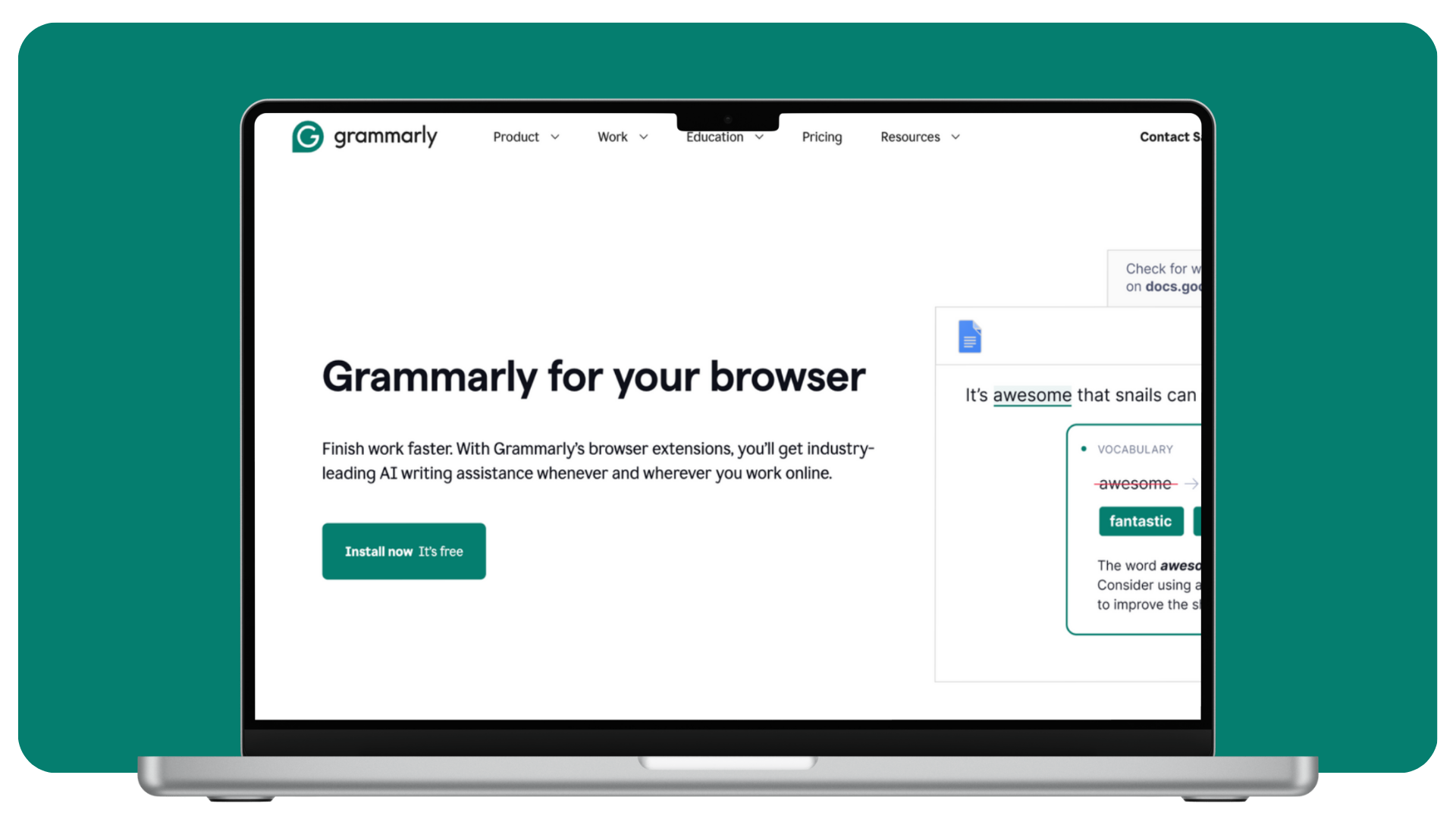
Think of Grammarly as your personal writing editor that never gets tired. ✍️ It’s a browser extension and app that checks your spelling, grammar, and even style as you write. Drafting an Instagram caption or a YouTube video description? Grammarly will underline mistakes or awkward phrasing in real-time. It helps ensure your content is polished and professional (or however you want it to sound – it even has tone detectors). The free version is great for basics, and the premium version offers advanced suggestions (like clarity improvements and plagiarism checks). This is a tool for content creators who want to put their best (word) forward and avoid those embarrassing typos.
Hemingway Editor
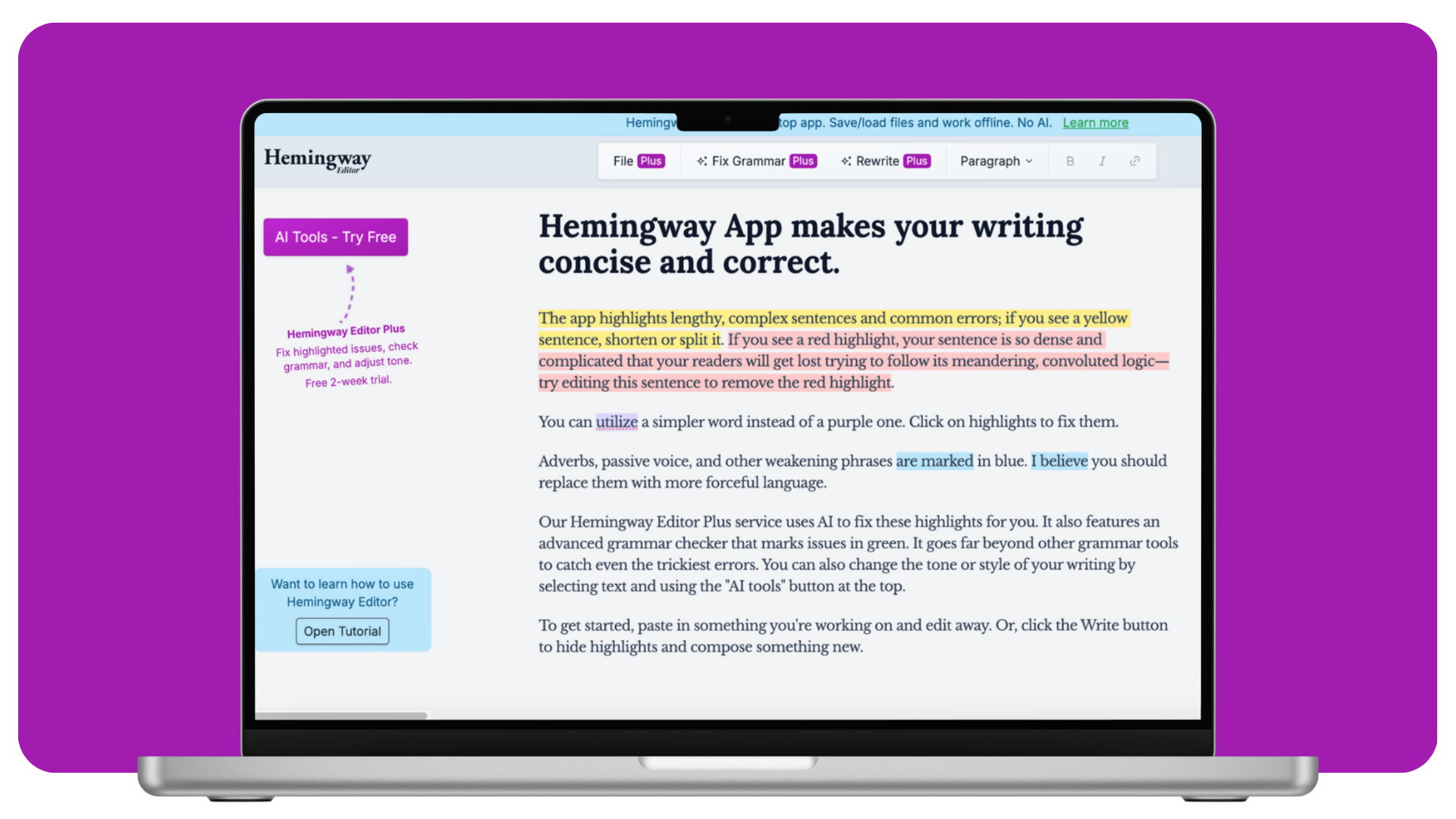
If brevity is your goal, Hemingway is the tool. It’s a simple editor that highlights overly complex sentences, excessive adverbs, and passive voice – essentially encouraging you to write in a clear, bold way (like Hemingway did). Copy-paste your caption or blog draft into Hemingway Editor, and you’ll get a readability grade. It’s especially useful for social media, where clarity and punchiness are key. After all, attention spans are short; you want your text to be easily digestible.
AI Writing Assistants (Jasper, Copy.ai, ChatGPT)
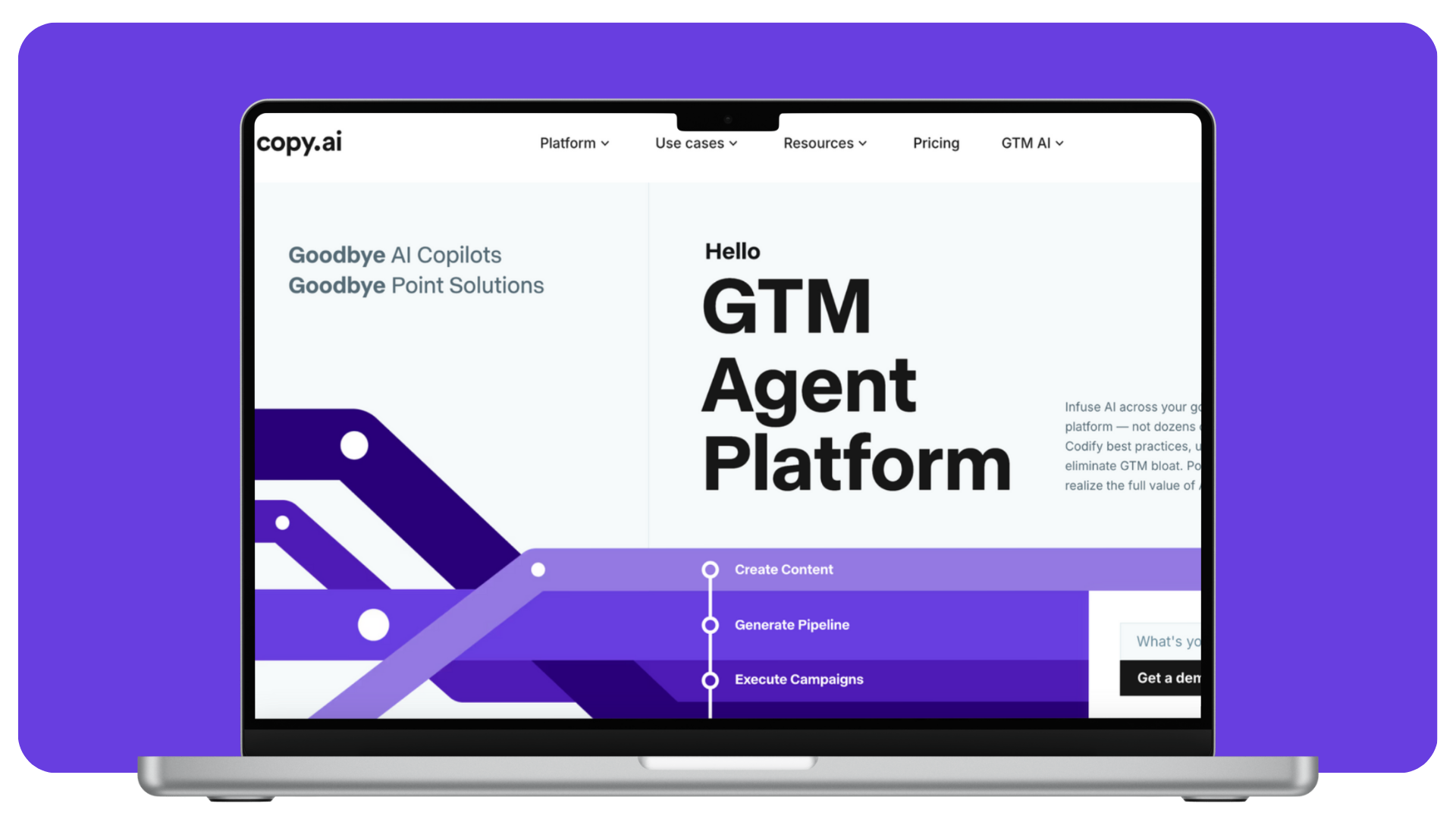
We’re in the era where AI can help write content. Tools like Jasper and Copy.ai are designed to produce marketing copy, captions, or even full blog posts based on prompts you give. And of course, ChatGPT can whip up everything from a witty Twitter quip to a rough draft of a LinkedIn article. Using AI tools for social media content creation has gone far beyond just writing captions – they can analyze what kind of copy works, suggest improvements, and generate variations. For example, if you struggle with writing engaging YouTube video titles, you could ask an AI tool to generate 10 options. Keep in mind, AI outputs might need tweaking to match your voice, but they’re fantastic for overcoming the blank page syndrome. Just remember to use AI as an assistant, not a crutch – originality and authenticity still come from you.
Google Docs

When it comes to actually writing out longer form content (like scripts or blog posts) and collaborating, good old Google Docs is a reliable choice. It’s free, cloud-based, and you can share drafts with others for feedback or approval. Many content creators write captions or script outlines in Docs so they can access them from anywhere (phone or laptop). Notion is another popular tool among creators – it’s like Docs + Trello + a wiki all in one. You can create content calendars, write drafts, and even manage projects in Notion. It’s a bit of a hybrid tool (fits in next section too), but worth mentioning here as a writing workspace that many find helpful.
Thesaurus and Keyword Tools

Spice up your copy by not repeating the same words over and over. A quick visit to Thesaurus.com can give you alternative words for “great” or “exciting” when you’ve used those five times already. If you’re doing content marketing, tools like SEMrush or Ahrefs have keyword explorers that can help you find popular terms to incorporate (which can make your content more discoverable). For example, if you run a travel blog, these tools might suggest using the phrase “travel on a budget” instead of just “cheap travel” based on search popularity. It’s a bit more on the SEO side, but serious content creators who also blog should consider it part of their writing toolkit.
Great text content can boost engagement and build trust with your audience. By combining these writing/editing tools with your unique voice, you’ll craft captions and stories that resonate. Also, error-free text shows professionalism – it may seem minor, but consistently clean, clear copy can set you apart from the meme accounts that don’t know the difference between your and you’re. 😜 So embrace these content development tools to refine your words before you hit “publish.”
Content Planning & Organization Tools
Creating content is one challenge; staying organized and on schedule is another. Ever scramble to find that idea you jotted down last week, or forget about a post you meant to publish today? We’ve all been there. This is where content planning and organization tools save the day (and your sanity). A well-organized content calendar and workflow ensure you’re consistently delivering quality content without last-minute panic. Here are some tools and platforms to help you plan, organize, and develop content like a pro:
Trello
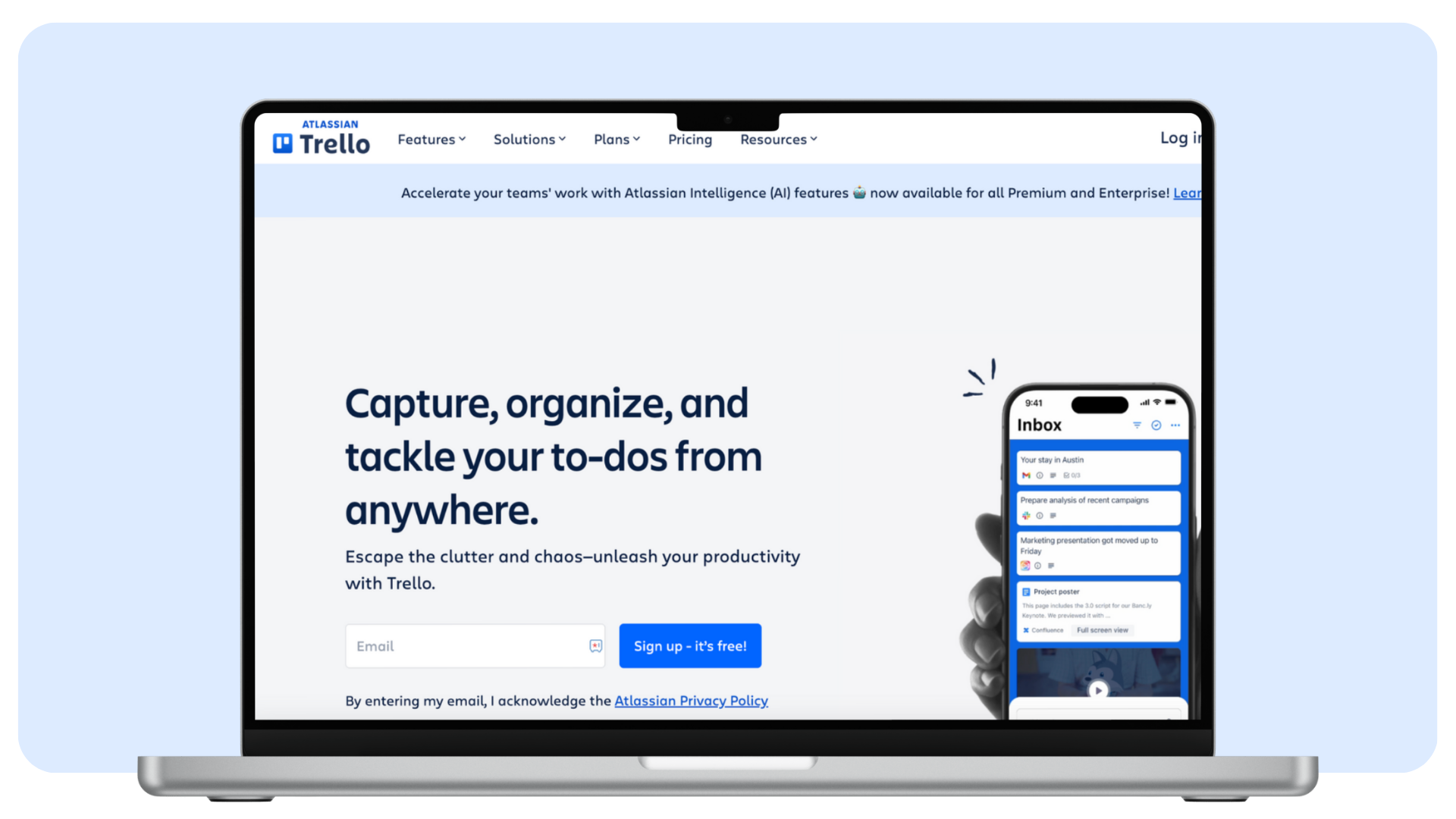
Think of Trello as an online bulletin board for all your ideas and tasks. You can create a board for your content calendar with columns like “Ideas,” “In Progress,” “Scheduled,” and “Published.” Each piece of content is a card that you can move through the workflow. You can attach images, set due dates, and add checklists (did I write the caption? design the graphic? etc.). It’s visual and intuitive – perfect if you like to see the big picture of your content pipeline. Trello has free and paid versions, and for a solo content creator, the free one is usually plenty.
Asana

If you work with a team or just love checklists, Asana is a step up. It’s a project management tool that lets you create tasks, subtasks, assign them to team members, and set deadlines. For content planning, you might create a project for your social media content calendar with tasks for each post or video. Asana’s calendar view can then show you exactly what’s scheduled for each day. It’s great for collaboration – for example, if you have a video editor or a graphic designer helping you, you can all coordinate in Asana. (Pro tip: Many social media marketing teams use Asana or similar tools to manage campaigns – so adopting it can prep you for professional workflows.)
Notion
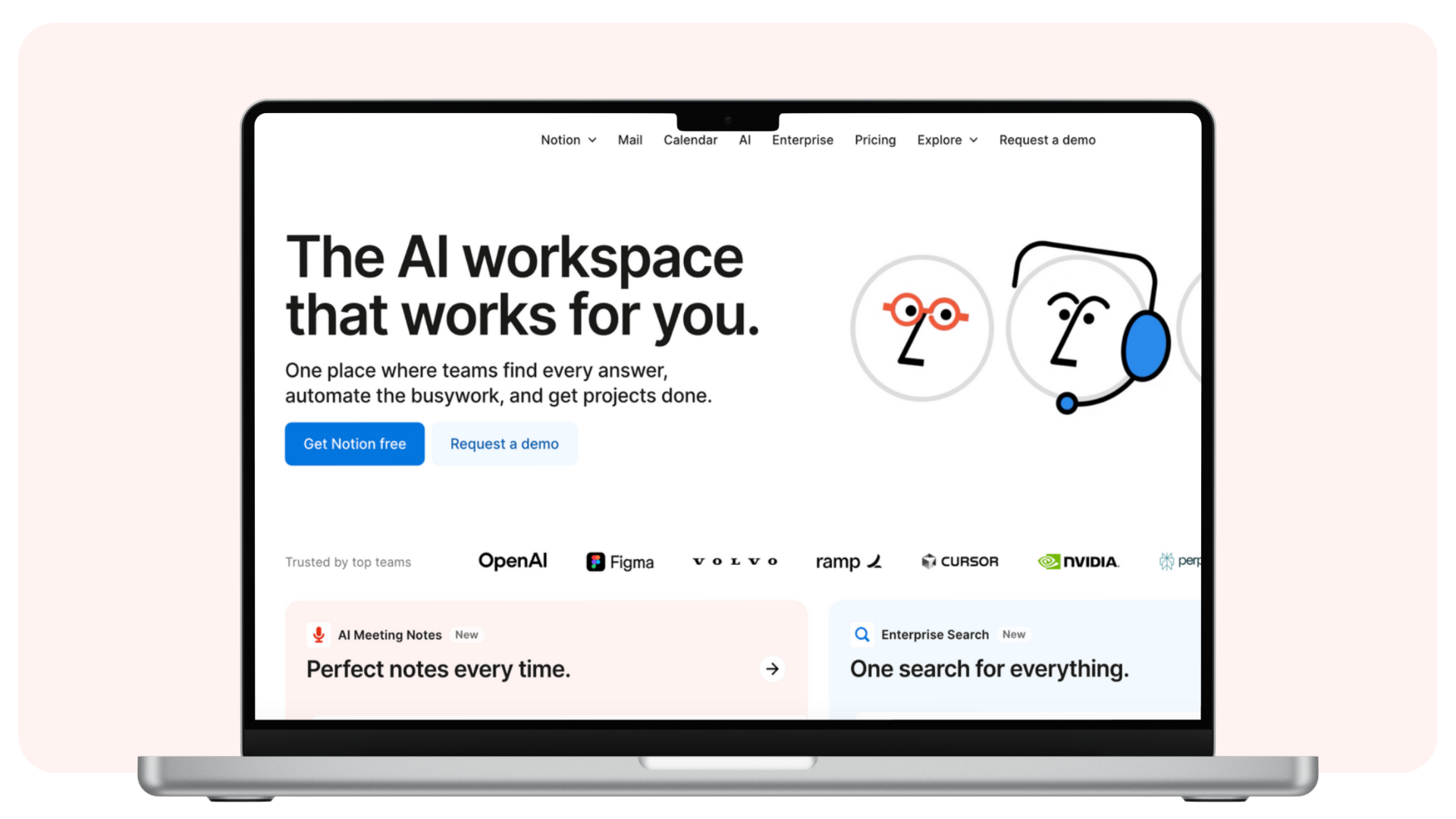
Mentioned earlier, Notion is an all-in-one workspace that many creators swear by for planning. You can build a custom content planner in Notion – it’s very flexible. Use a calendar database for scheduling posts, a table for tracking brand collaboration deliverables, or pages for storing your hashtag research, etc. The beauty of Notion is you can structure it however you want (templates abound online for “Notion content calendar”). It can be a bit overwhelming at first, but once you set it up to match your workflow, it’s incredibly powerful.
Google Calendar + Sheets
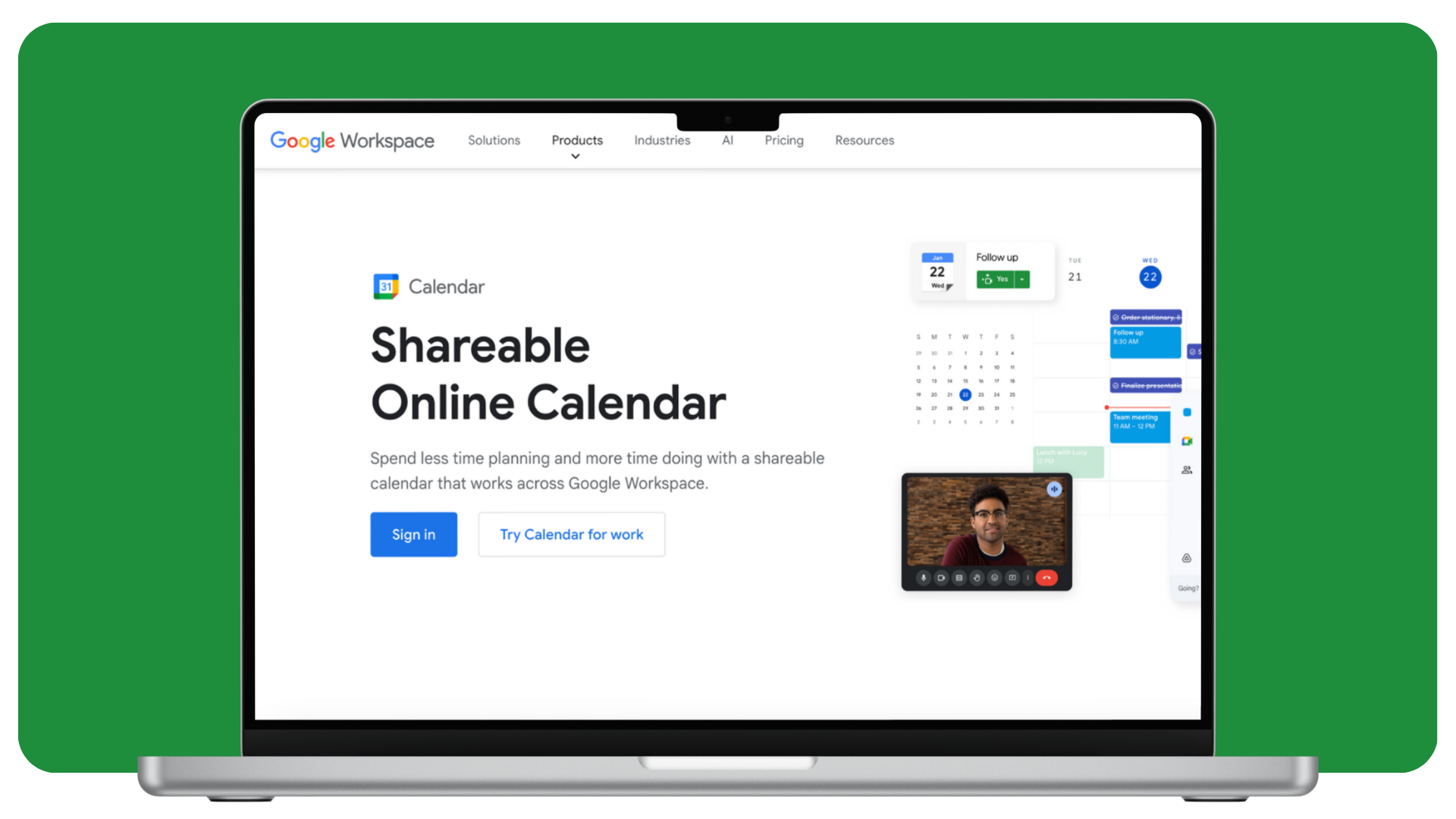
Sometimes the simplest tools do the job. If you prefer a straightforward approach, you can mark your posting schedule on a Google Calendar – e.g., “Post IG carousel about XYZ on March 10 at 6pm.” Enable notifications so you don’t forget. For planning ideas or tracking performance, Google Sheets works well. You can maintain a sheet with columns for date, topic, format (image/video), status, and performance metrics after posting. It’s not fancy, but it’s free and accessible on all devices.
ContentStudio / Planable
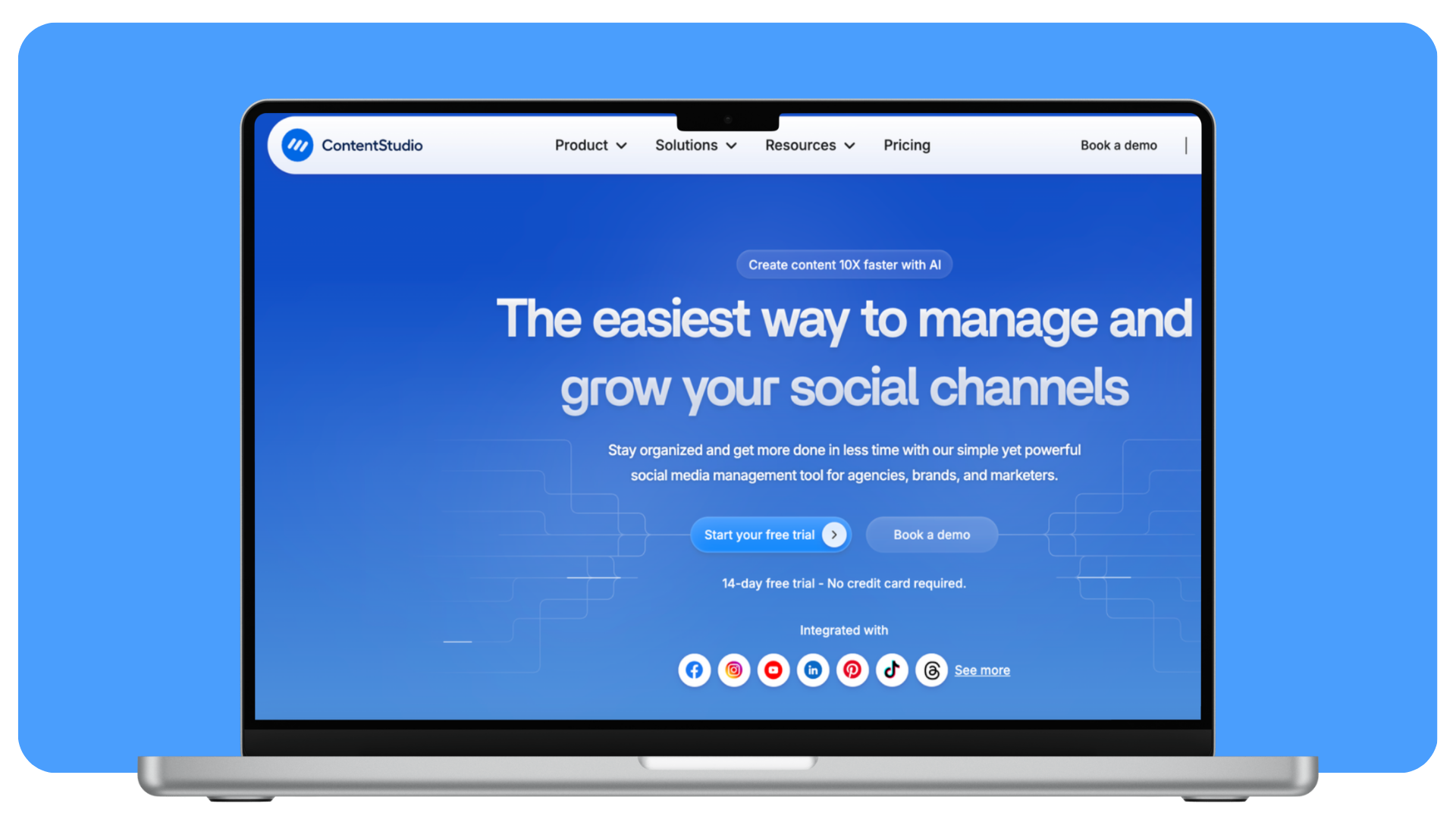
These are specialized content creation platforms that combine planning with actual scheduling (we’ll talk scheduling next). ContentStudio, for instance, offers a content calendar interface where you can plan and also directly schedule posts to publish on social platforms. Planable is similar, with an emphasis on collaborative planning (like getting posts approved by clients or teammates). They blur the line between planning and scheduling tool – worth considering if you want an integrated solution. Some of these are paid services, but if you’re managing multiple social channels it could be worth it.
Why bother with planning tools? Because consistency is everything in social media growth. A content calendar helps you maintain a steady flow of posts and ensures variety (so you don’t accidentally post five motivational quotes in a row or neglect a platform for weeks). It also helps you align content with holidays, campaigns, or trends ahead of time. Many creators find that planning at least 1–2 weeks out (if not a month) reduces stress and last-minute scrambles. Plus, if inspiration strikes randomly, you have a system to capture that idea for later rather than forgetting it.
In short, tools for content creators aren’t just about making the content – they’re also about organizing it. A bit of upfront planning can elevate your content game from hobbyist to seasoned pro.
Social Media Scheduling & Management Tools
Once you’ve created your amazing content and planned when to post it, the final step is actually publishing and monitoring it. Logging in to each social media account and manually posting every time can be a chore – especially if you’re active on multiple platforms. That’s where social media scheduling tools (sometimes called social media management tools) come into play. These tools allow you to schedule posts ahead of time, manage all your accounts in one place, and even analyze performance. They are essential tools for social media marketing and content creation workflows. Let’s check out the top ones:
Buffer
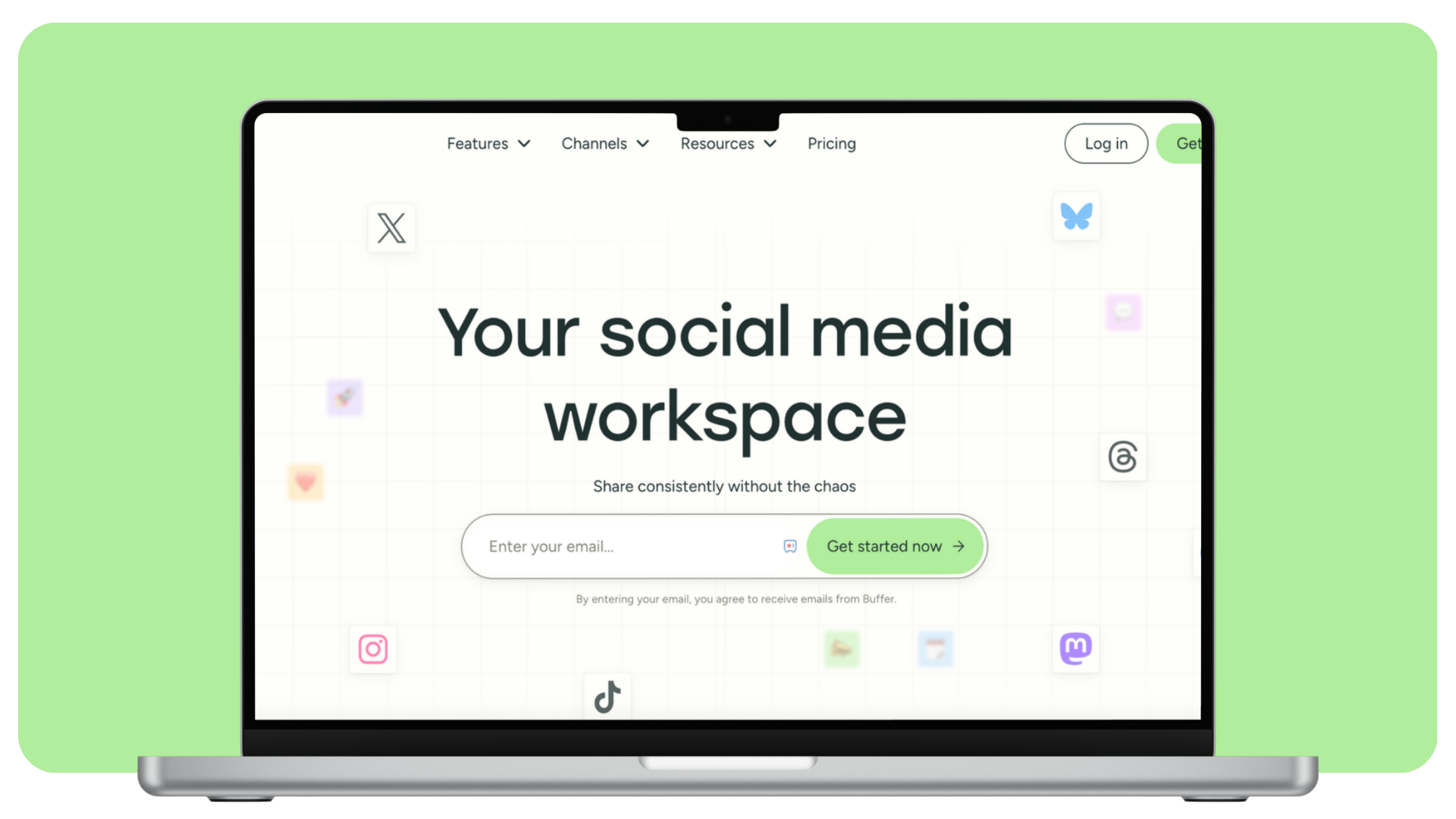
A popular, user-friendly scheduling tool that supports platforms like Twitter (X), Facebook, Instagram, LinkedIn, and more. With Buffer, you can queue up posts for each platform, attach images or videos, and set custom times or use an optimized schedule. It’s fantastic for maintaining a consistent posting cadence. For example, you could spend Monday morning scheduling out your entire week of content across platforms using Buffer – then you don’t have to worry about posting each day manually. Buffer’s free plan lets you manage a few social accounts and schedule up to 10 posts per account (plenty if you’re just starting). It even has a handy mobile app, so you can schedule on the go.
Hootsuite

One of the original social media tools for scheduling and monitoring, trusted by many large teams. Hootsuite is a bit more complex than Buffer, but it offers a powerful dashboard. You can schedule content, but also set up streams to monitor mentions, comments, or keywords. That means besides posting, you can use Hootsuite to keep an eye on engagement and even competitor activity. It supports a wide range of networks. The downside: their free tier is very limited now, so it’s mostly a paid tool. If you’re a solo creator, Hootsuite might be more horsepower (and cost) than you need, but it’s good to know in case you scale up or collaborate with others.
Later
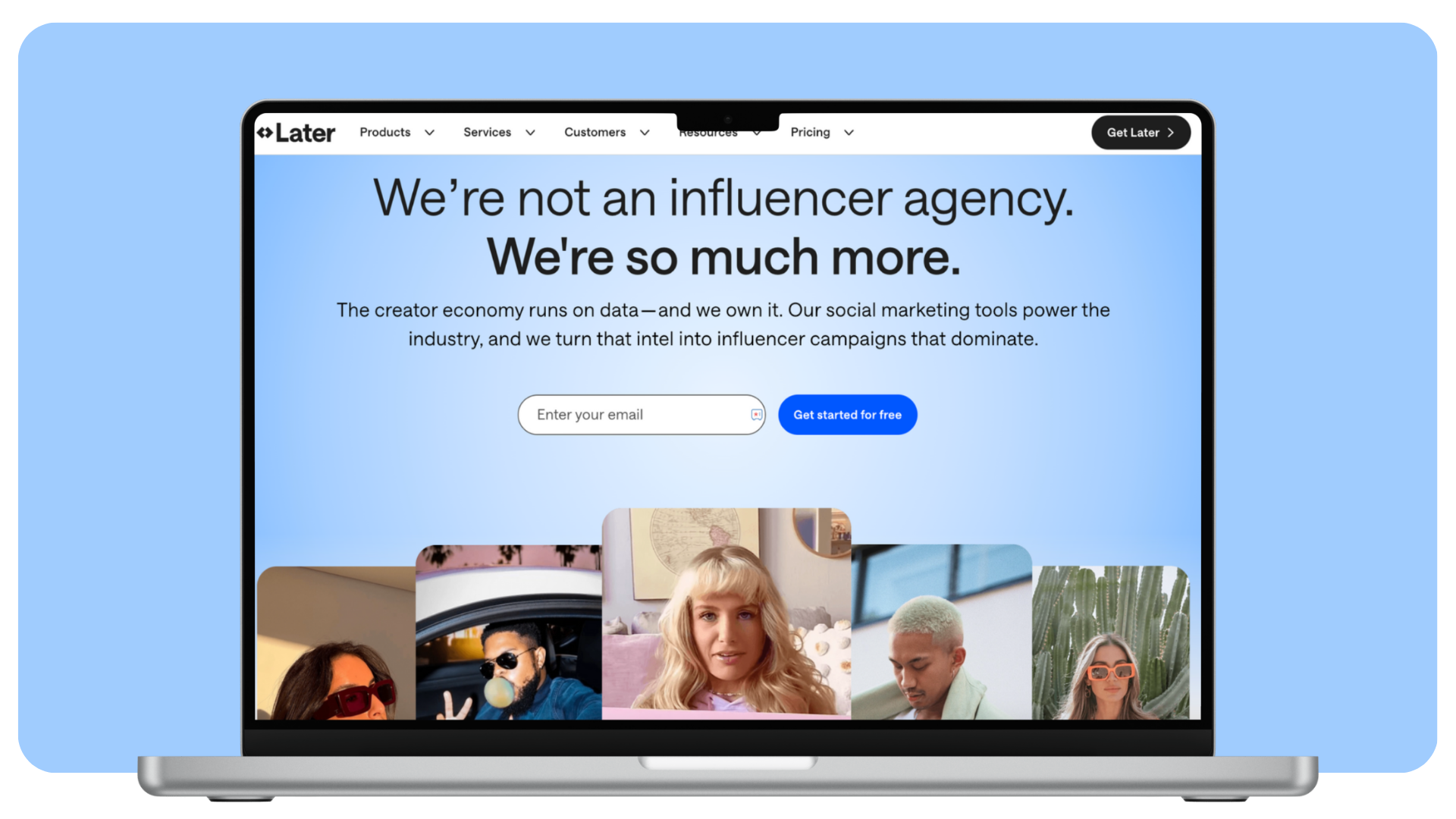
If Instagram is your main playground, Later is worth a look. It started as an Instagram scheduling tool and is very visual – it even shows you a preview of your planned Instagram grid layout, which is super useful if you care about how your profile looks. Later supports other platforms now too (like Pinterest, Facebook, TikTok, etc.), but it’s especially loved by Instagram influencers. It has features like hashtag suggestion and first comment scheduling (to keep hashtags out of your caption). There’s a free plan with basic features and paid plans for more advanced needs.
Sprout Social
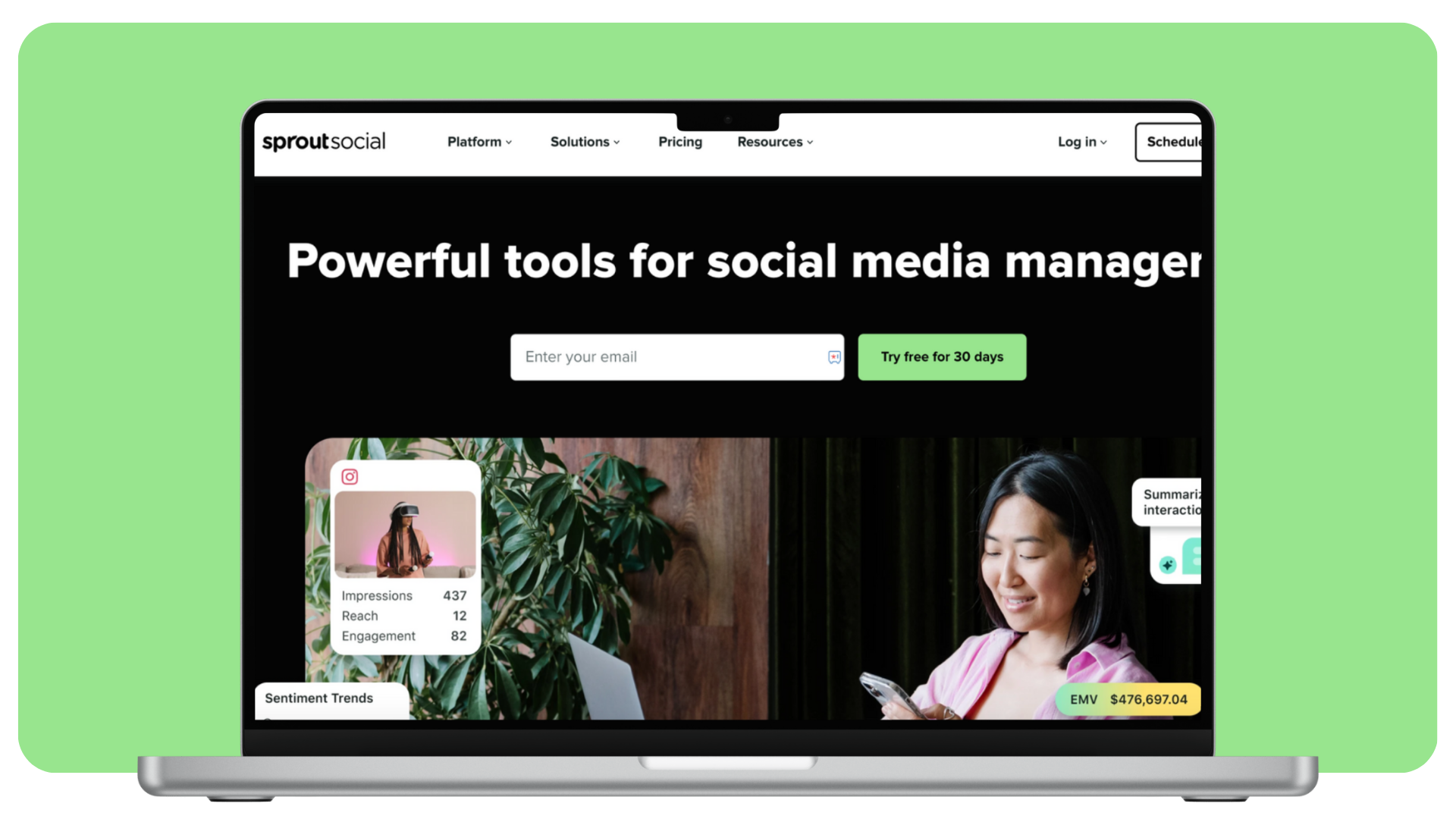
A higher-end tool (read: pricier) that combines scheduling with robust analytics and team collaboration features. Sprout Social gives you in-depth reports on how your content is performing, audience demographics, engagement rates, etc. It’s more of a social media management suite aimed at businesses, but some serious content creators use it to manage their brand. The publishing features are top-notch, and it even has social listening tools to track brand mentions or keywords. Probably overkill for most individuals, but if you’re handling social for a brand or multiple clients, Sprout is often the go-to.
CoSchedule
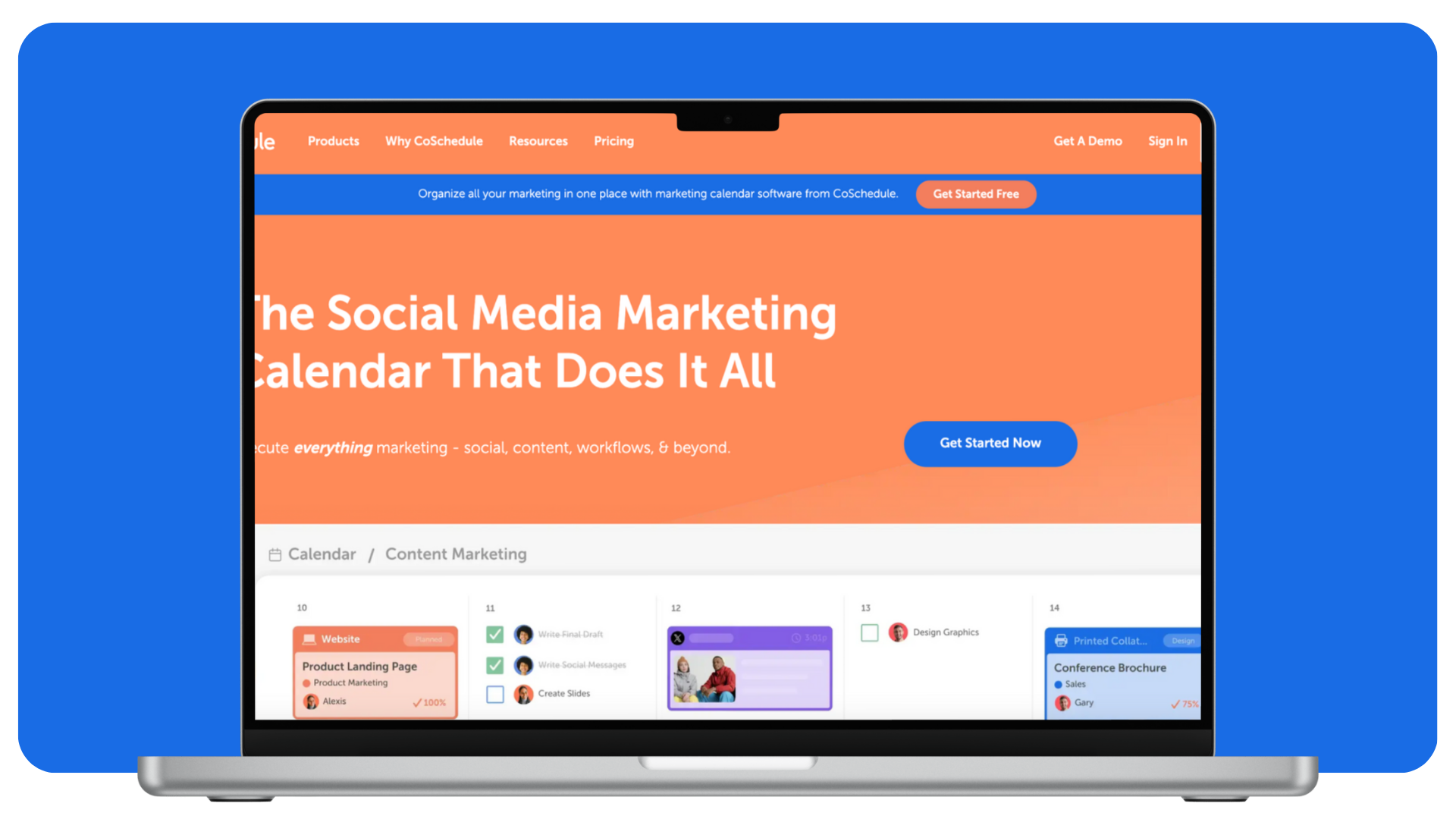
This tool wears two hats – it’s an editorial calendar (we mentioned it earlier in context of planning) and a scheduling tool. CoSchedule integrates nicely if you have a blog (WordPress integration) plus your social platforms. You can plan a blog post and also plan the social promos for that post in one place. It also offers a headline analyzer (handy for blog titles or even video titles to gauge how catchy they are). CoSchedule’s calendar view is beloved by content marketers who want one unified calendar for everything. For a content creator with a blog and multiple socials, it’s a great way to keep things organized and automated.
Native Scheduling Tools
Worth a quick mention – most major platforms now have some native scheduling ability. Facebook (and Instagram) have the Meta Business Suite which lets you schedule posts and stories. X has TweetDeck (for scheduling tweets), Pinterest has its own scheduler for Pins, etc. If you’re only focusing on one platform, using its free built-in scheduler might suffice. However, if you’re juggling many accounts, a third-party tool like the ones above will simplify life by putting it all in one dashboard.
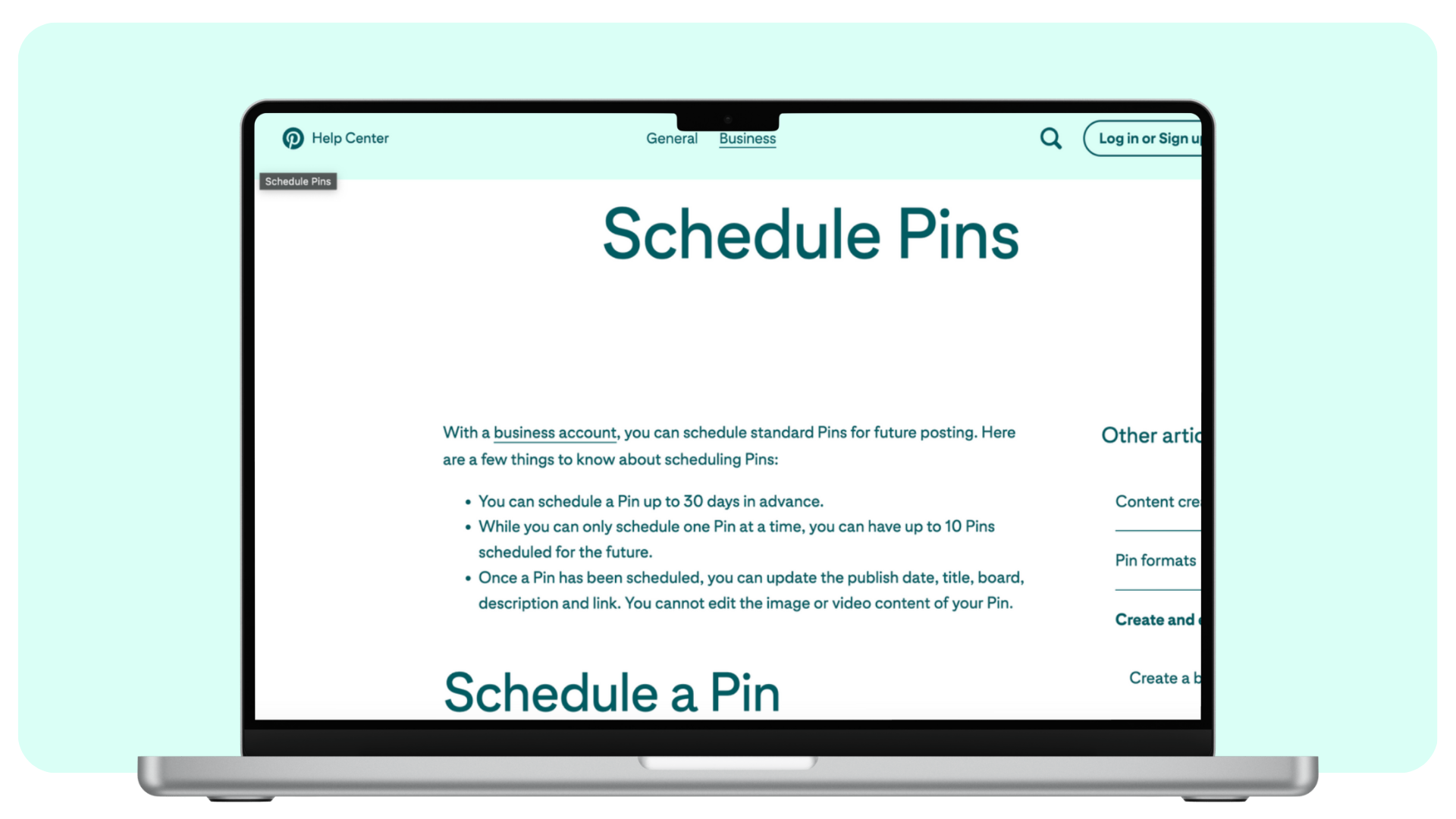
Using scheduling tools doesn’t mean “set and forget.” You still should check in on your posts, respond to comments, and engage with your community in real time. But these tools free you from being tied to the clock or your phone when it’s time to post. They’re especially helpful if your audience is global – you can schedule content to go live at, say, 2 AM your time because that’s when it’s noon in another key region. Overall, scheduling and management tools are social media content creator tools that save time and bring consistency and insights to your workflow.
Now that we’ve covered a ton of tools across all aspects of content creation, how do you choose the best ones for you? It might be tempting to try them all (and you certainly can experiment), but start with a few that meet your most pressing needs. If you struggle with design, grab Canva. If keeping a schedule is hard, Buffer or Later will be your friend. As you grow, you’ll naturally expand your toolkit.
One thing’s for sure: leveraging these tools can significantly boost your efficiency and content quality. Creators who effectively use tools often find they can produce more content (and better content) in less time. And when you save time on the mechanics of creation, you can spend more time on strategy and creativity – the human parts that truly make your content unique.
Before we wrap up, here’s a quick FAQ to address some common questions swirling around these topics (because I know we just threw a lot of info your way):
Frequently Asked Questions (FAQs)
Q: What are social media tools?
A: Social media tools are applications, platforms, or software that help you manage your social media presence and create content more effectively. This includes everything from content creation tools (for designing visuals, editing videos, writing captions) to scheduling tools (for publishing posts automatically) and analytics tools (for tracking performance). In short, they’re digital helpers that make the life of a content creator or social media manager easier. For example, Canva is a social media tool for designing graphics, while Buffer is a tool for scheduling and publishing posts. Using the right social media content tools and content marketing tools allows creators and marketers to save time and achieve better results on their social platforms.
Q: How do I create content for social media?
A: Creating content for social media typically involves a few key steps:
1. Ideation: First, come up with ideas that will resonate with your audience. You might research trending topics, use a content ideas tool (like AnswerThePublic or Google Trends), or simply brainstorm based on your niche and what your followers ask for.
2. Creation: Next, actually create the content. This could mean writing a caption or blog post, taking a photo, designing a graphic, or filming a video. Use the appropriate content creation tools for this step – for instance, Canva for graphics, your smartphone camera or CapCut for videos, and so on.
3. Editing: Refine your content. Check your text with Grammarly for any errors, tweak your photos with editing apps, or trim your video to keep it engaging. This is where those writing and editing tools come in handy to polish your work.
4. Optimization: Tailor the content to each platform’s requirements. That means correct image/video dimensions, using relevant hashtags or keywords, and adding captions or subtitles to videos if needed. Also consider the best time to post for your audience.
5. Scheduling/Posting: Finally, publish the content when your audience is most active. You can do this manually or use scheduling tools like Buffer or Later to queue it up in advance.
6. Engage: Creating content isn’t just “post it and leave.” Engage with any comments or feedback you get. Social media favors interaction, so reply to your viewers, start conversations, and build relationships.
In essence, creating social media content is about understanding your audience, consistently delivering value or entertainment to them, and using tools to help streamline the process. It might sound like a lot, but with practice (and the right tools) it becomes second nature. The key is to stay organized (content calendars help) and be authentic in what you create.
Q: What is content creation in social media?
A: Content creation in social media refers to the process of producing and sharing material (like text, images, videos, or infographics) on social platforms in order to inform, entertain, or engage an audience. It’s a core part of any social media strategy or personal brand building. This process includes brainstorming ideas relevant to your followers, actually making the content using various digital content creation tools, and then publishing it on platforms like Facebook, Instagram, Twitter, TikTok, LinkedIn, etc. Importantly, social media content creation isn’t just about making random posts – it’s usually guided by a goal or strategy (for example, to increase brand awareness, drive traffic to a website, or build a community). It also involves adapting to each platform’s style (what works on TikTok might not work on LinkedIn, for instance). In summary, content creation in social media is the art and science of crafting posts that people will want to consume and interact with on social networks.
Q: How can I be a social media content creator?
A: Becoming a social media content creator is an exciting journey! Here are some tips to get started:
Choose Your Niche: First, decide what you want to create content about. It could be anything – fashion, tech gadgets, travel, fitness, food, memes, education, you name it. Ideally, pick something you’re passionate about or have expertise in, because you’ll be creating a lot of content around it.
Study the Platforms: Content creation isn’t one-size-fits-all. Learn the ins and outs of the platforms you’re targeting. Maybe you love the visual vibe of Instagram, the short-form video format of TikTok, or long-form videos on YouTube. See what successful creators in your niche are doing on those platforms – not to copy them, but to understand content trends and audience preferences.
Build Your Toolkit: Equip yourself with some basic content creator tools. As we covered in this article, you’ll likely need a good camera (your smartphone might suffice to start), editing apps (for photo and video), and maybe a scheduling tool if you plan to post a lot. Don’t worry about buying expensive gear on day one – focus on mastering the tools you have. Many famous creators started with just a phone and free apps!
Create and Post Consistently: Now comes the doing. Start creating content and put it out there! In the beginning, don’t obsess over perfection – you learn by doing. Aim for consistency, whether that’s posting three times a week or daily. Consistency helps you improve and signals to your audience that you’re serious. Use a content calendar to plan ahead so you’re never scrambling for what to post.
Engage with Your Community: Being a content creator is as much about the community as it is about the content. Respond to comments, ask your followers questions, and be present. This not only helps you grow (because platforms reward engagement) but also gives you feedback on what people like, so you can create more of it.
Keep Learning and Evolving: Algorithms change, trends come and go, and new tools emerge (hello AI!). Be adaptable and keep learning. Follow other creators, join creator communities or forums, and maybe take online courses if you want to sharpen specific skills (like video editing or graphic design). The best creators are always evolving with the platform and audience shifts.
Monetization (if that’s a goal): As you grow, you might start thinking of making money from your content – through brand partnerships, ads, selling merchandise, etc. Each platform has its own monetization methods (like YouTube’s Partner Program or TikTok’s Creator Fund). There’s also the broader content creator economy which, as of 2025, is huge – worth over $100 billion and counting. Many tools and marketplaces exist to help creators monetize. But remember, authenticity first – build an audience and trust before trying to cash in.
In a nutshell, to become a social media content creator: start creating, stay consistent, use tools to polish and streamline your work, and engage with your audience. It’s a lot of fun and a lot of work – but if you love the content you make, it never truly feels like “work.” Good luck, and enjoy the creative process!
Wrapping up
Being a content creator in today’s digital world is like being a one-person production studio – you’re the writer, designer, video editor, and marketer all at once. It might sound intimidating, but thanks to the amazing array of tools we have discussed, even a solo creator can produce content that looks like a whole team made it. From free content creation apps that let you design on your phone, to powerful software that can automate your posting schedule, there’s never been a better time to create content.
Remember, the best content creation tools are the ones that fit your style and help you where you need it most. Start with a few core tools and master them. Over time, you’ll build out a personalized toolkit that covers every aspect of your workflow. And don’t forget to keep an eye on new tools emerging – the landscape is always evolving, especially with AI-driven innovations coming fast.
Finally, while tools are fantastic, it’s your creativity, voice, and authenticity that truly make your content shine. Tools don’t replace the human element – they amplify it. So equip yourself, experiment fearlessly, and have fun creating. With the right tools and mindset, you’re all set to create digital content that not only looks pro-level but also connects with people. Now go out there and make some awesome content – I’m already looking forward to hitting that like button on your next post!
